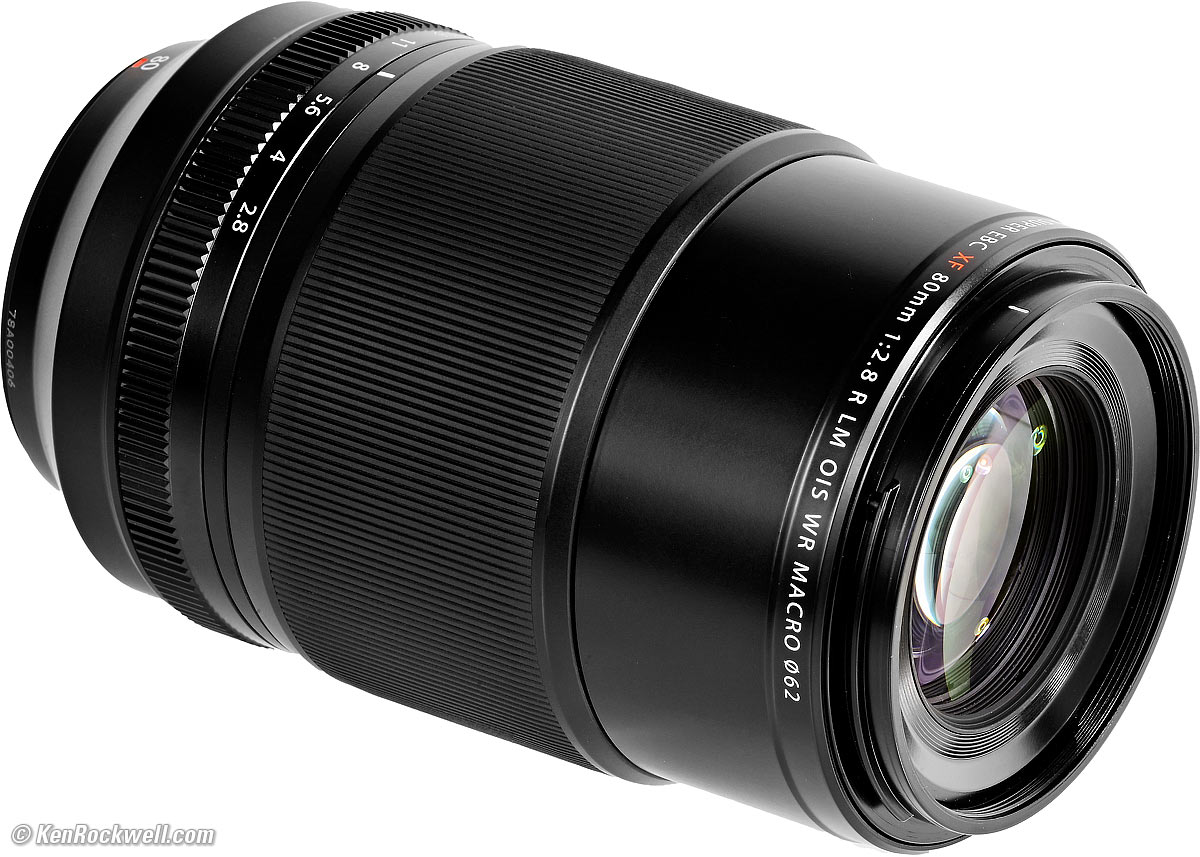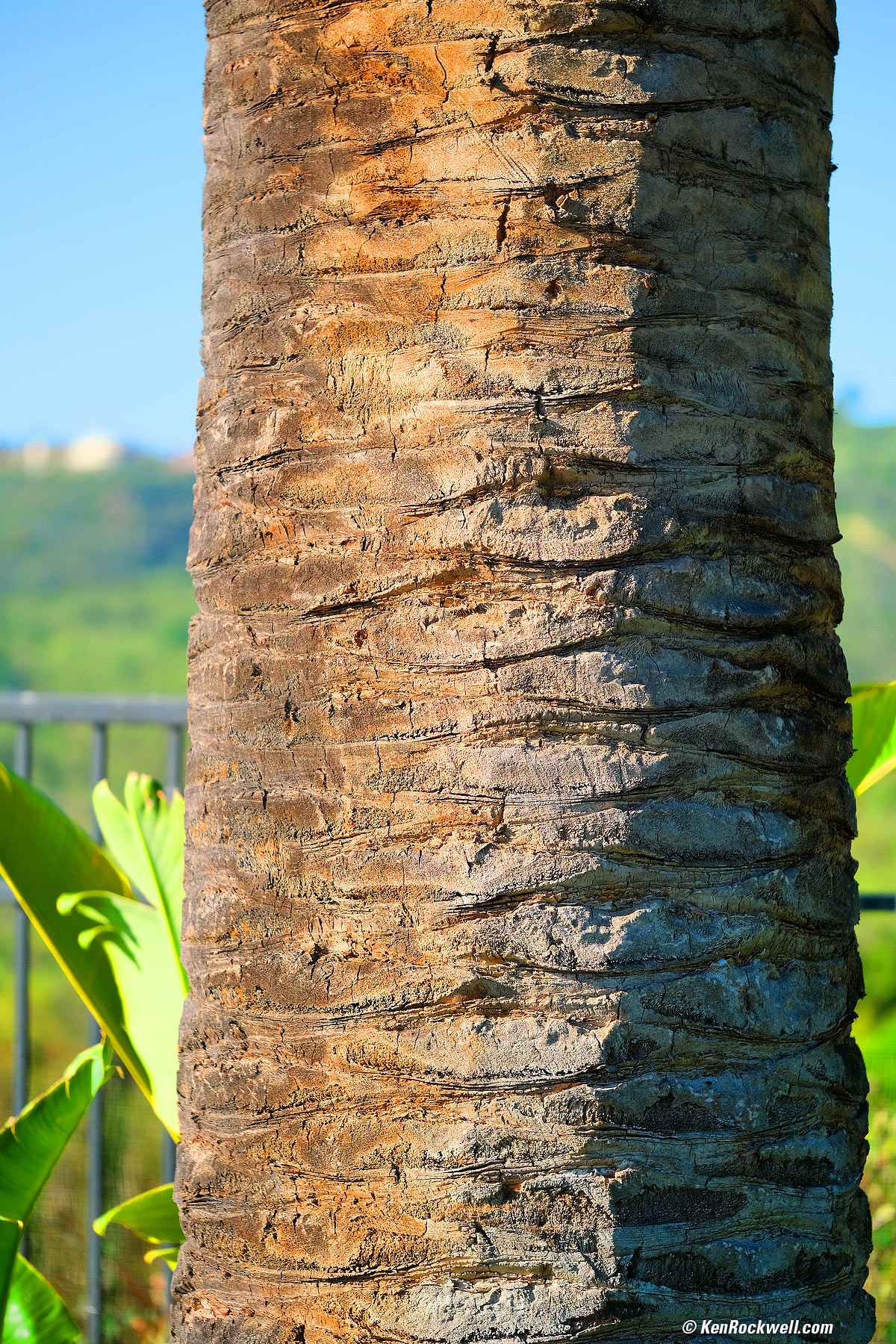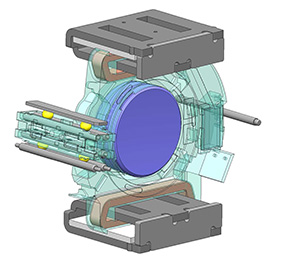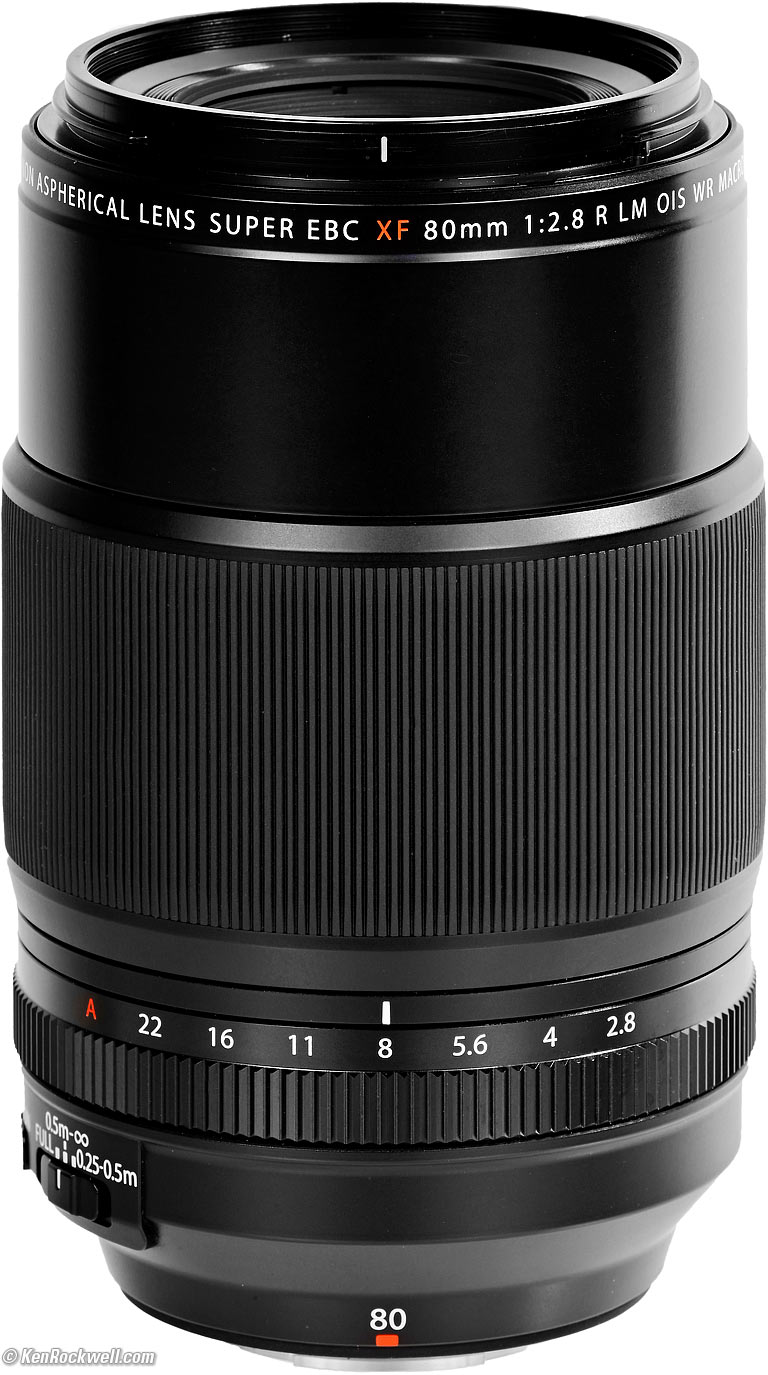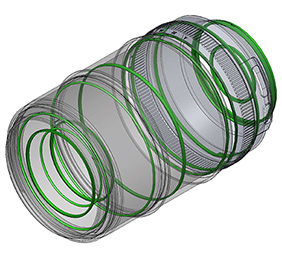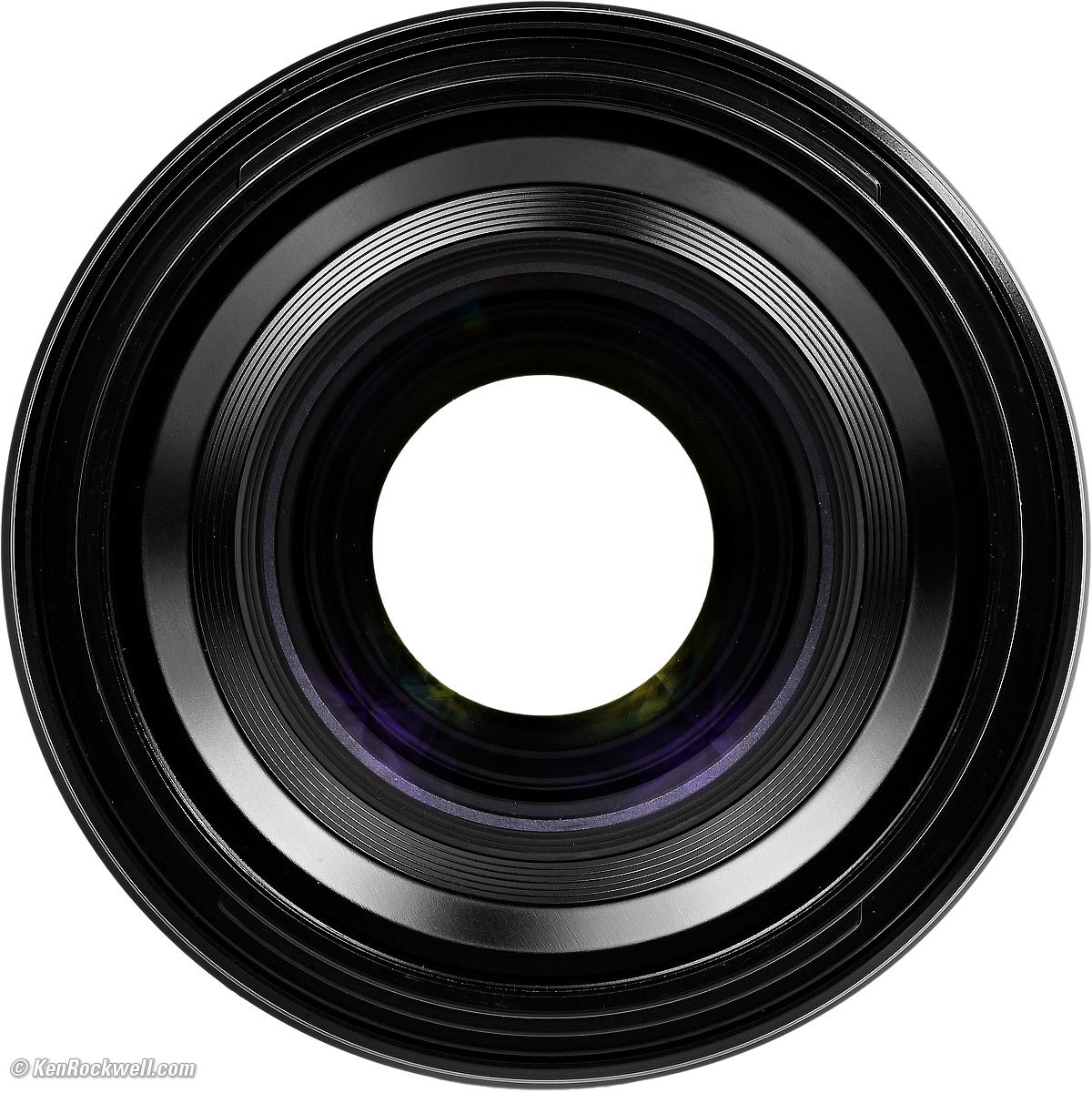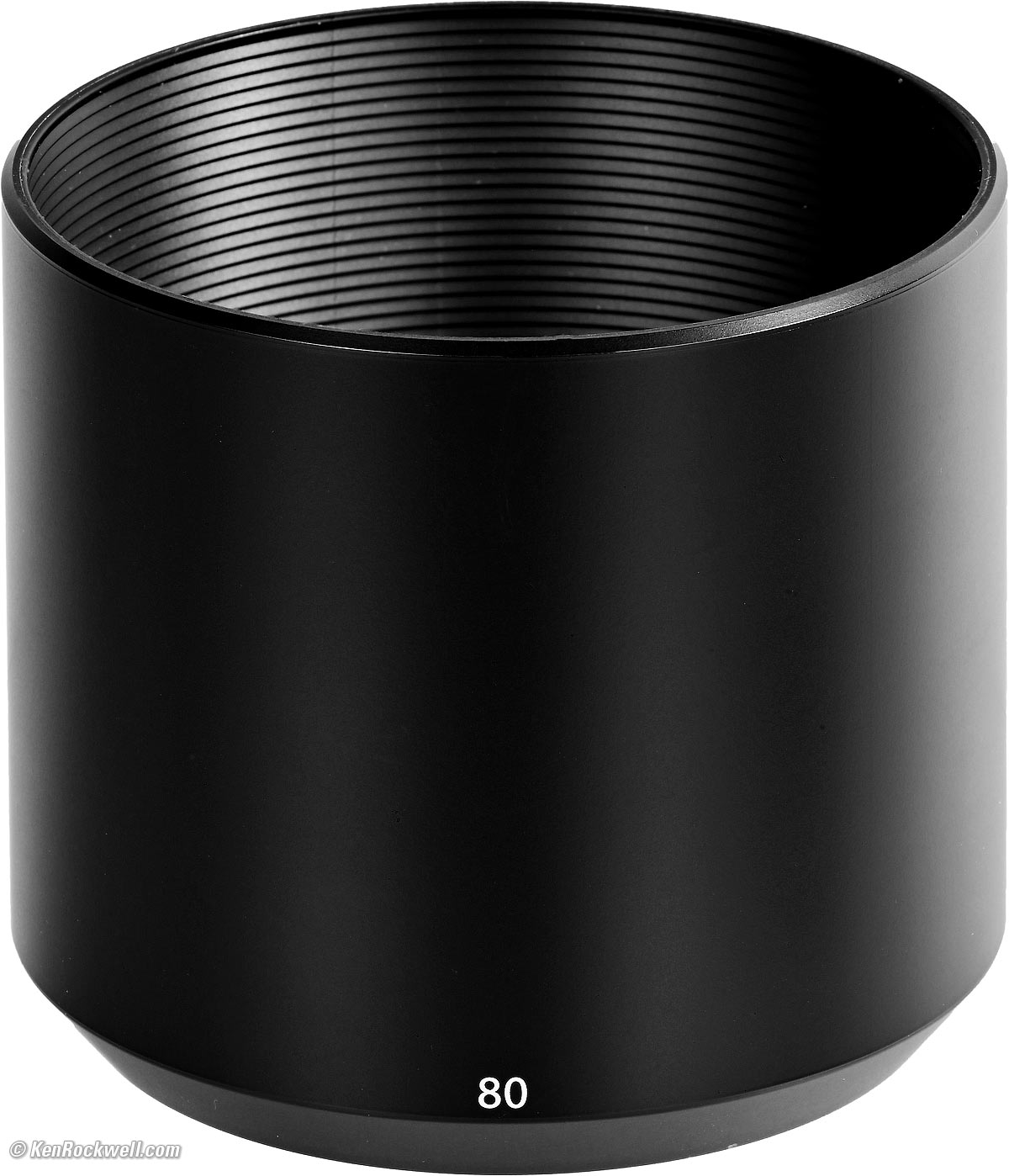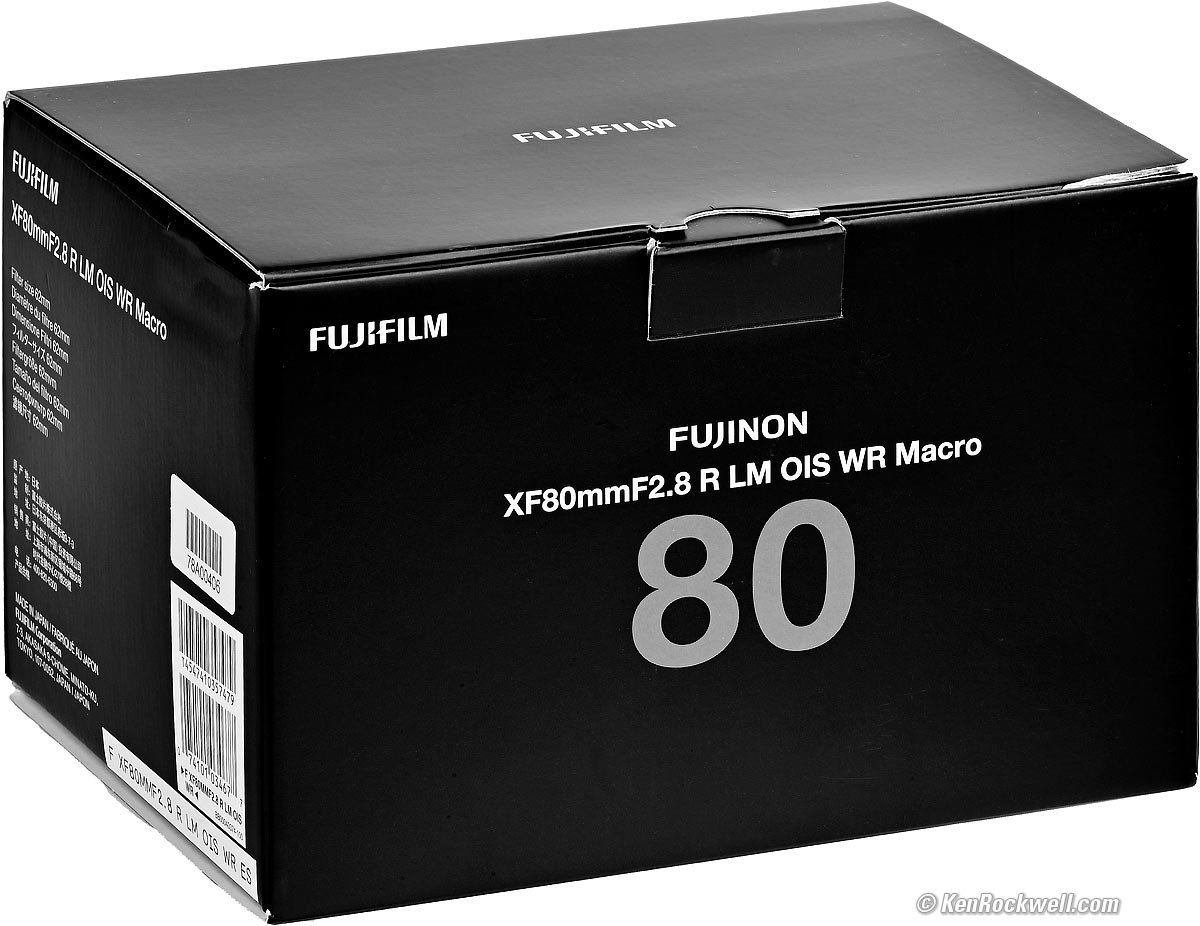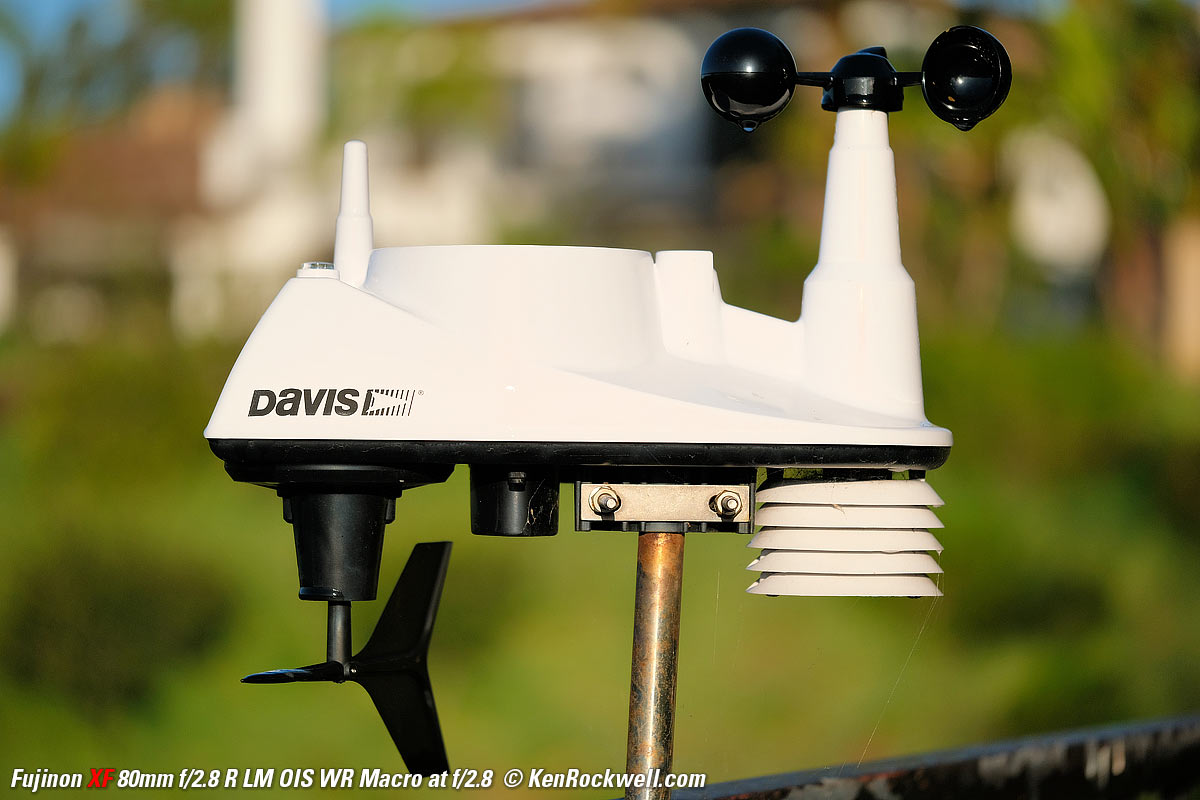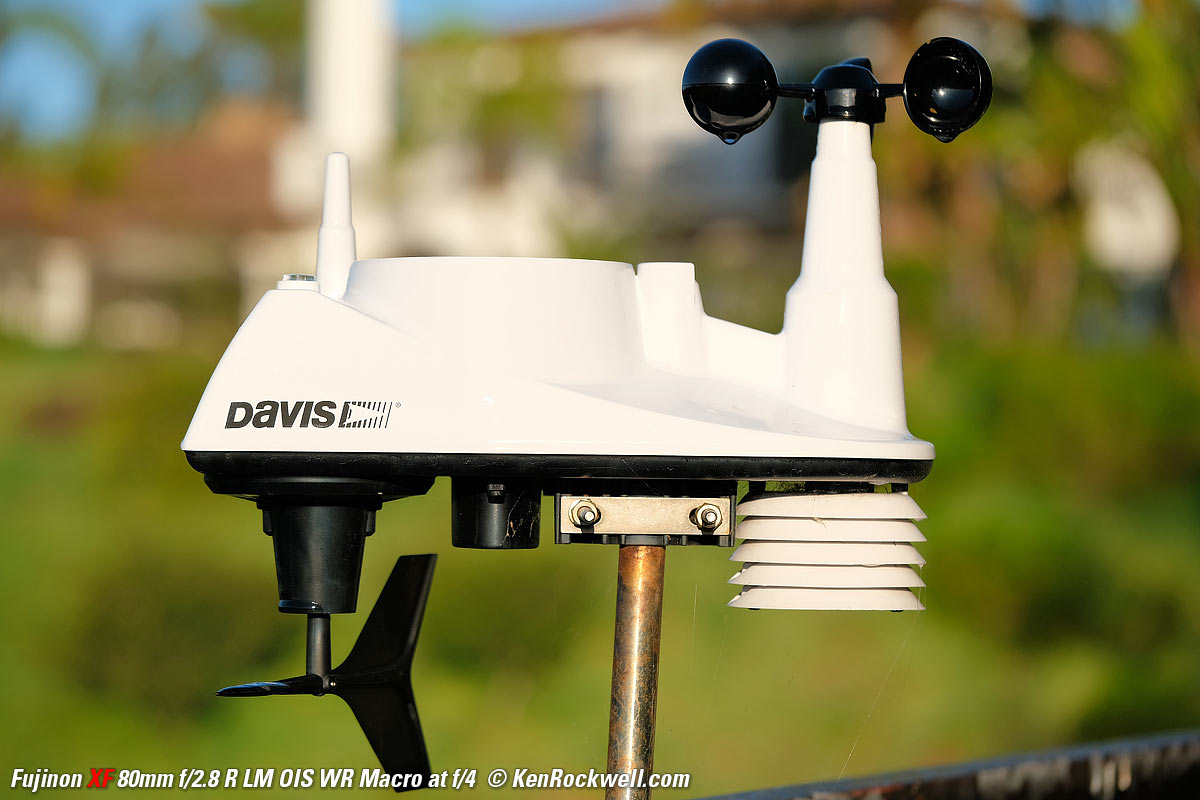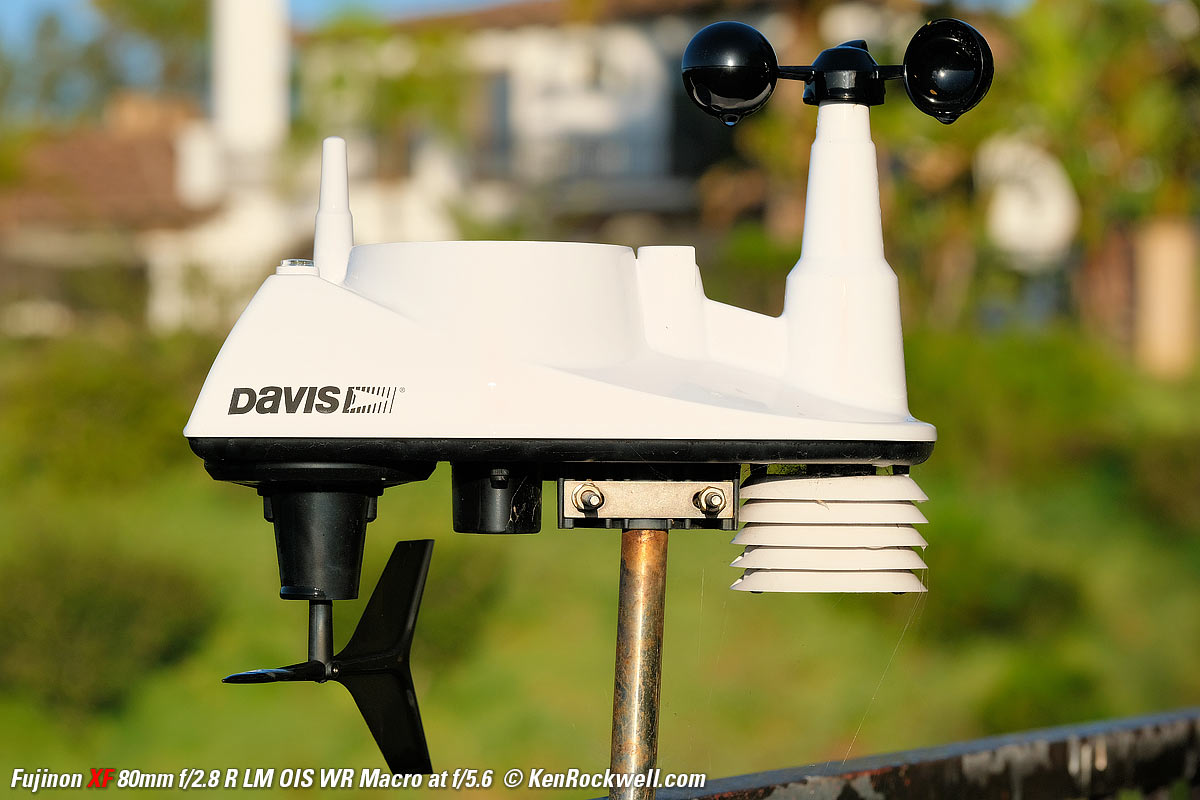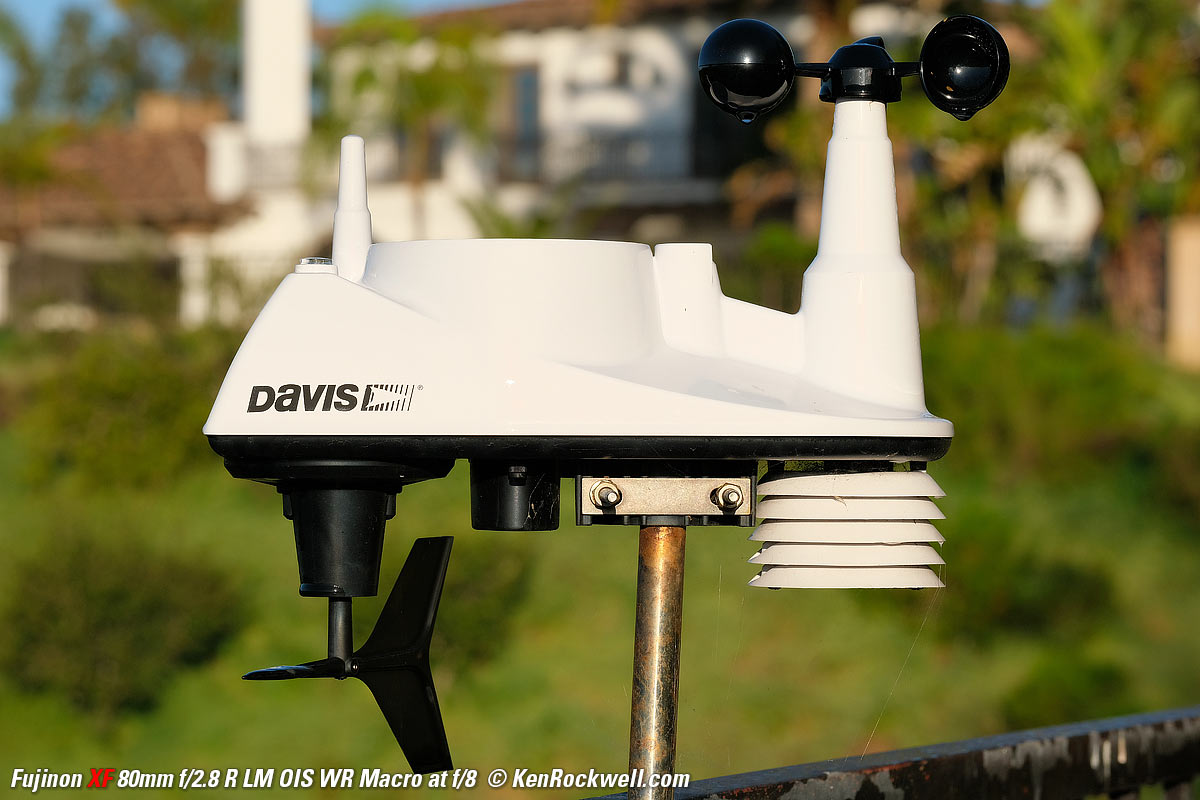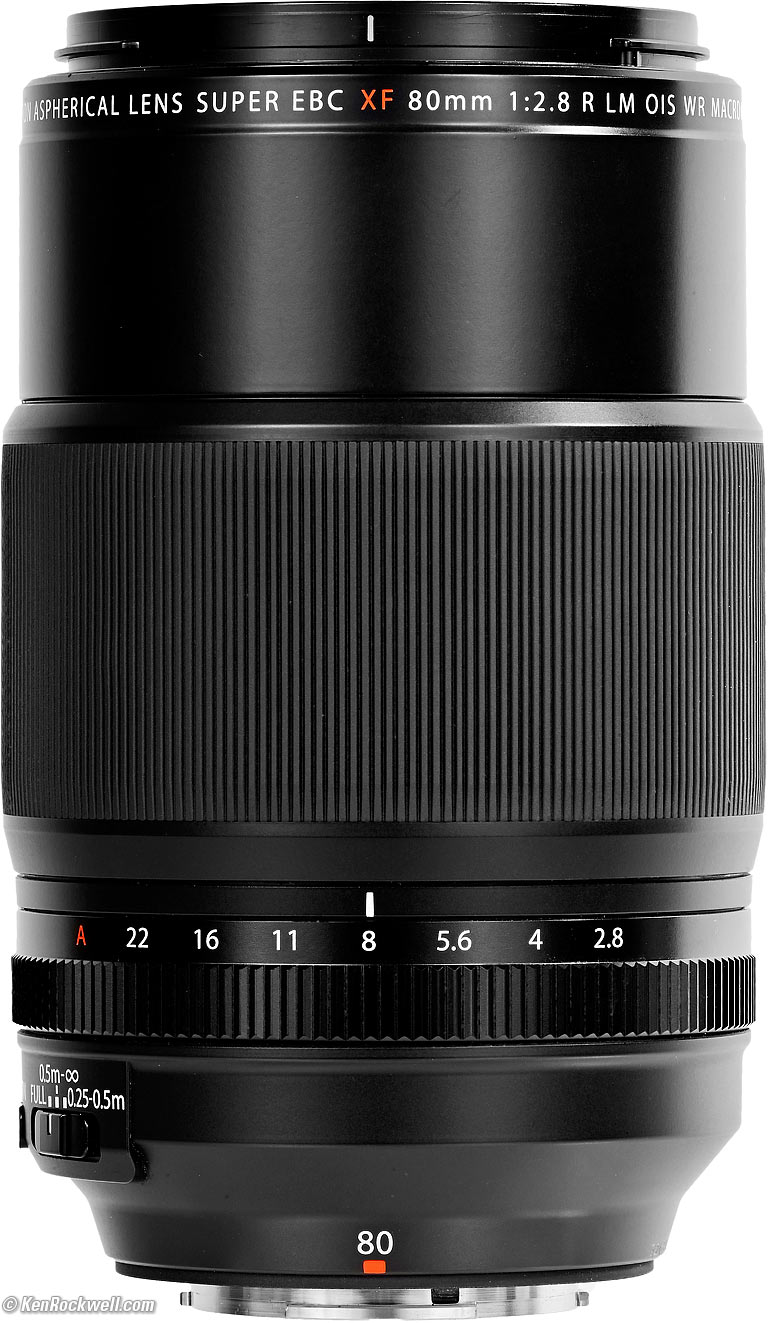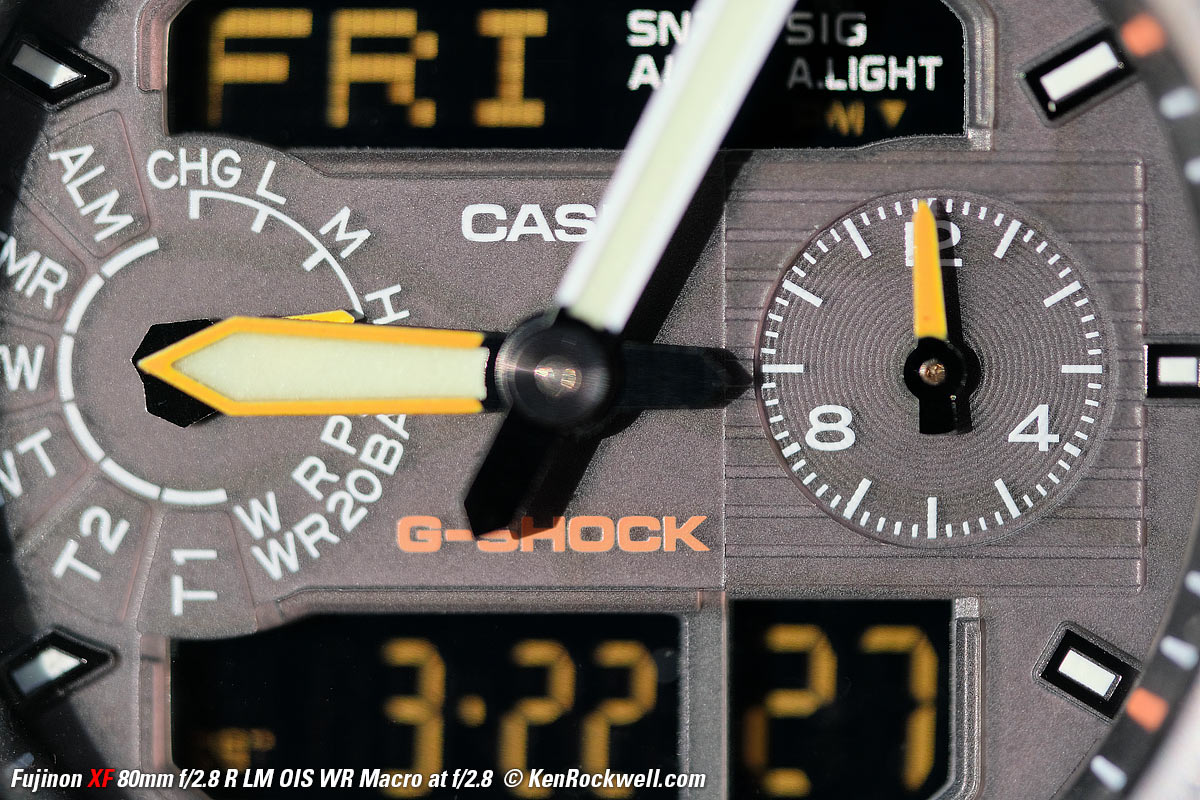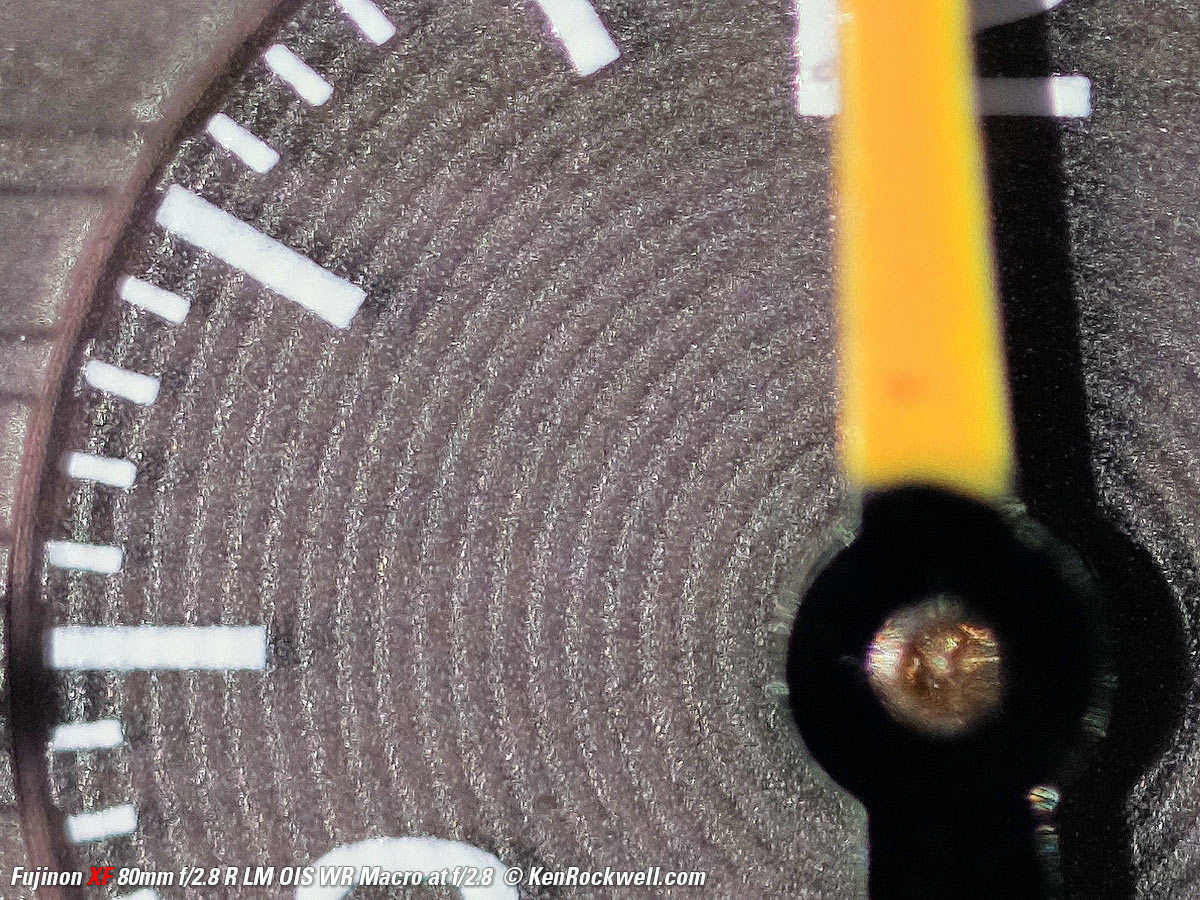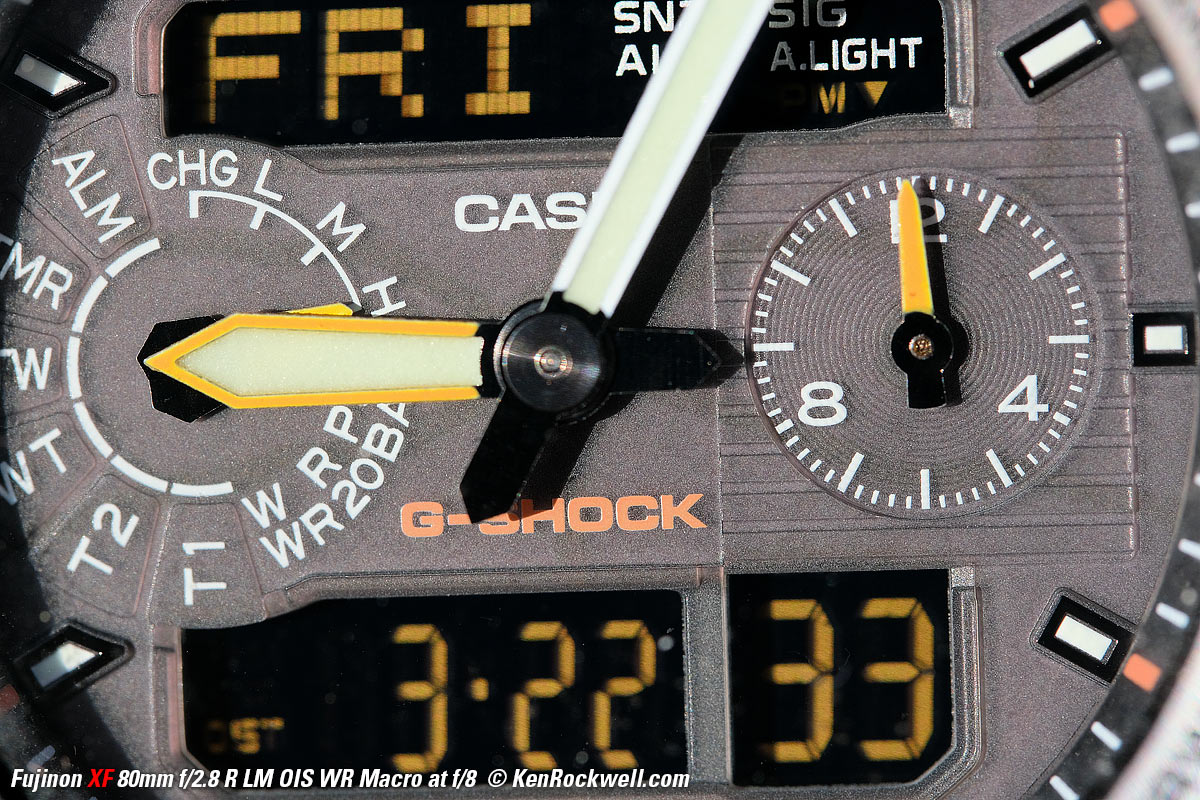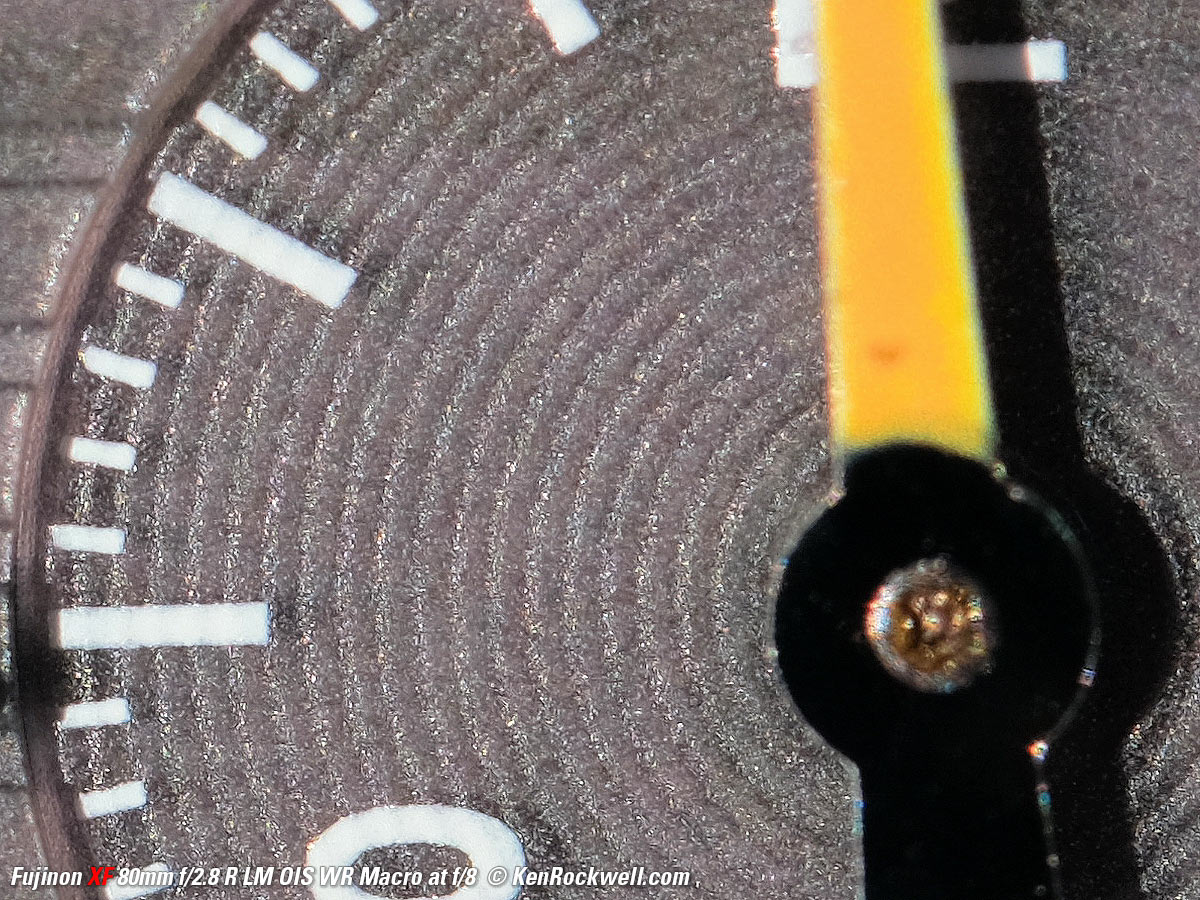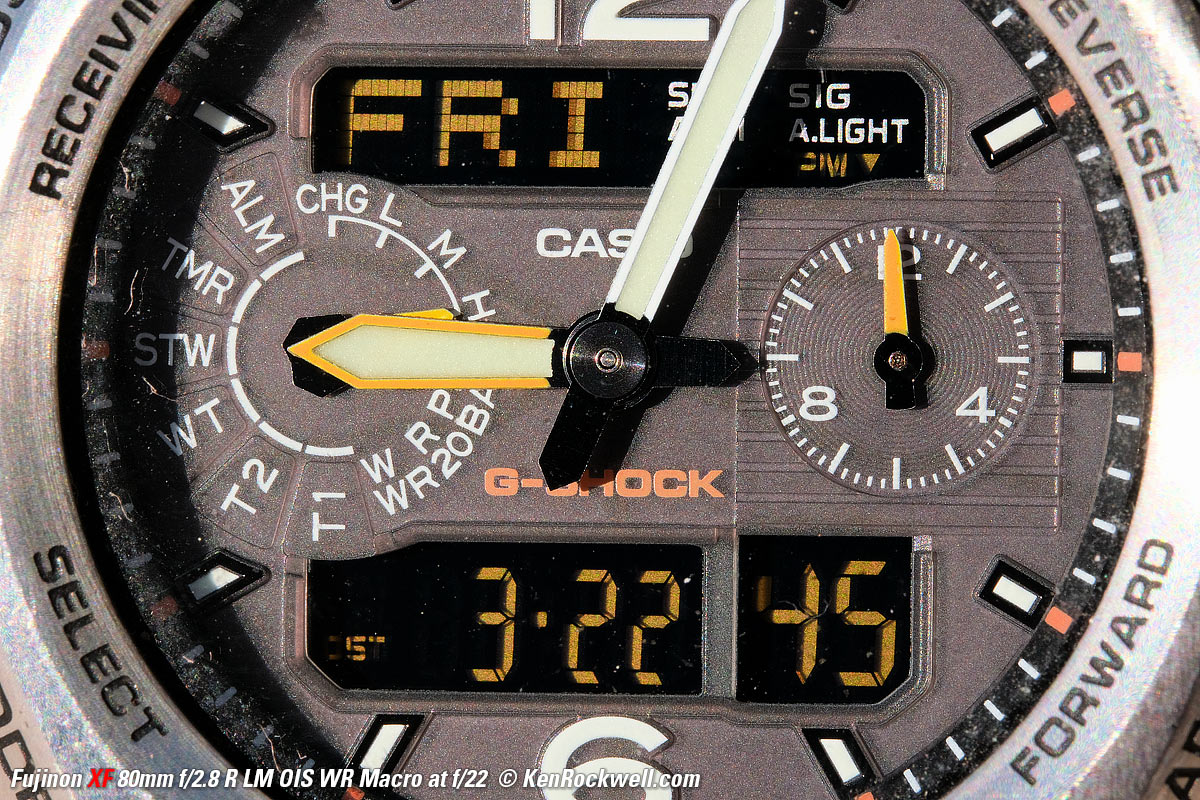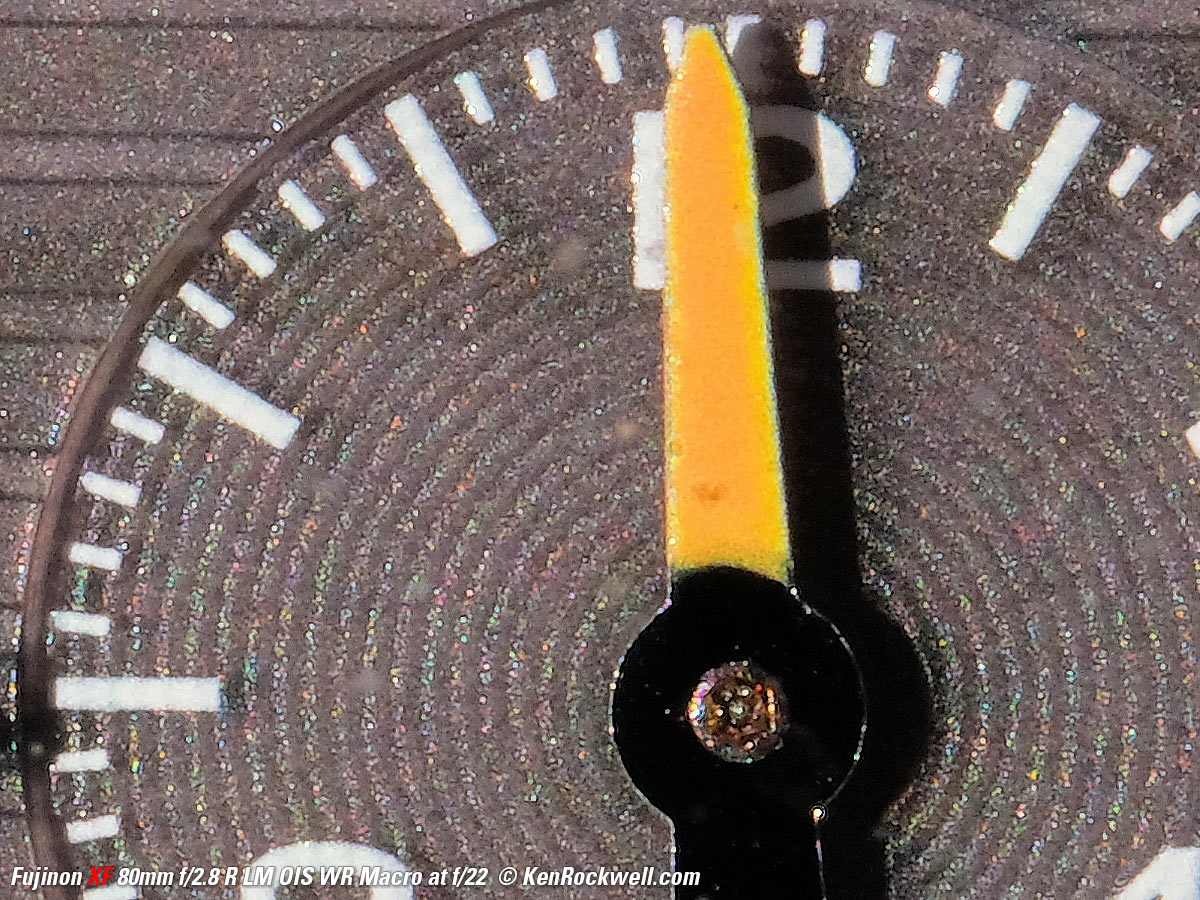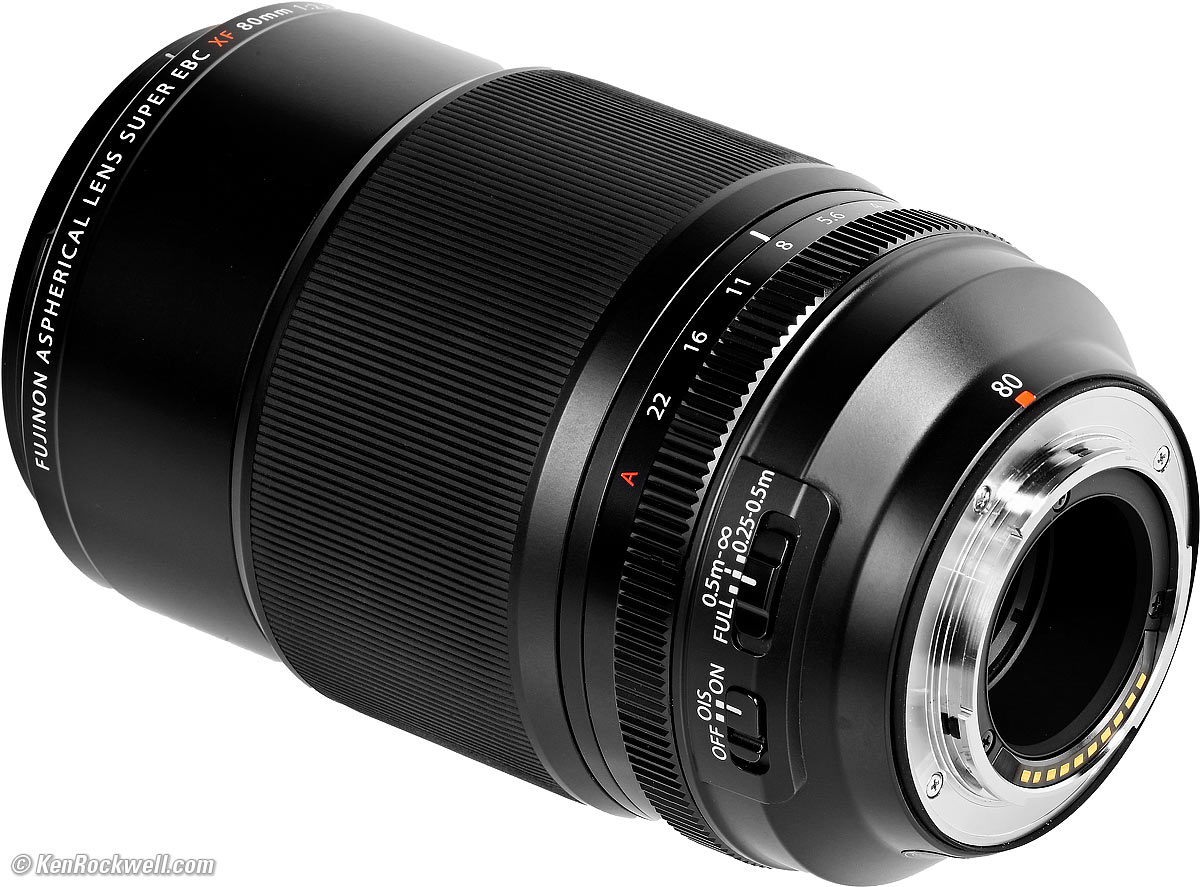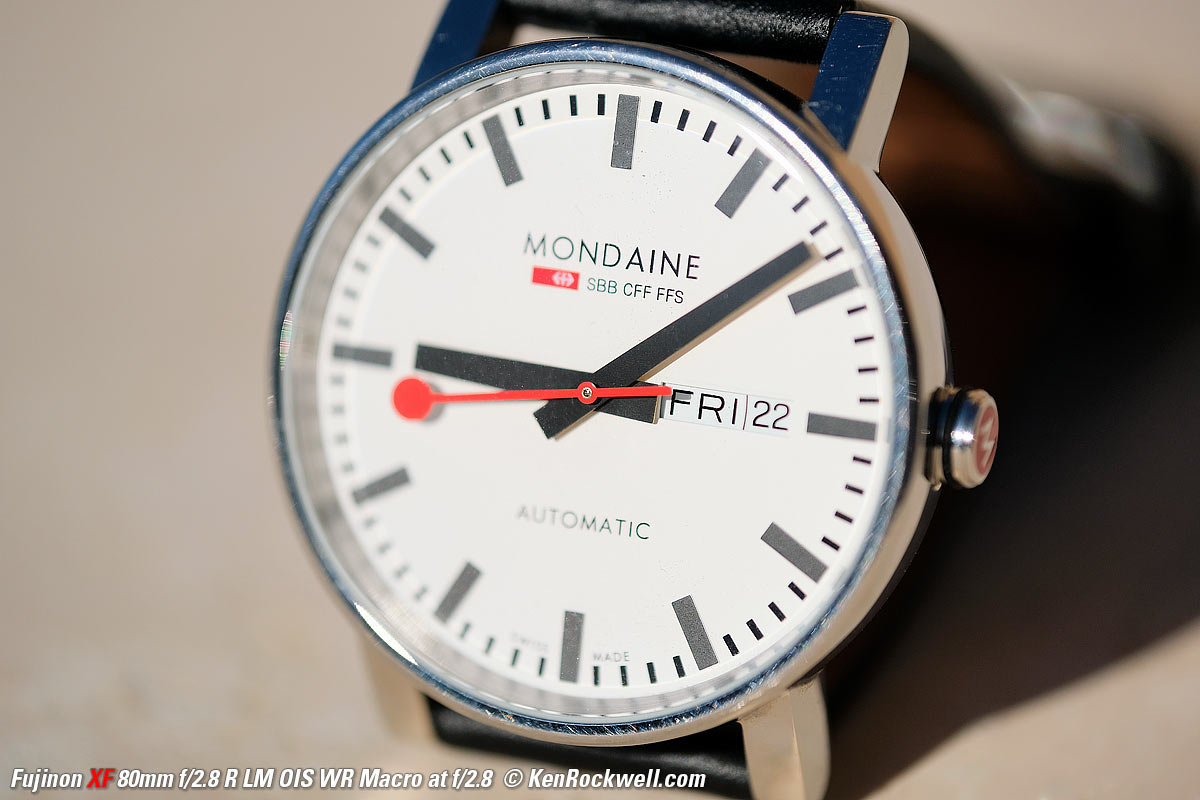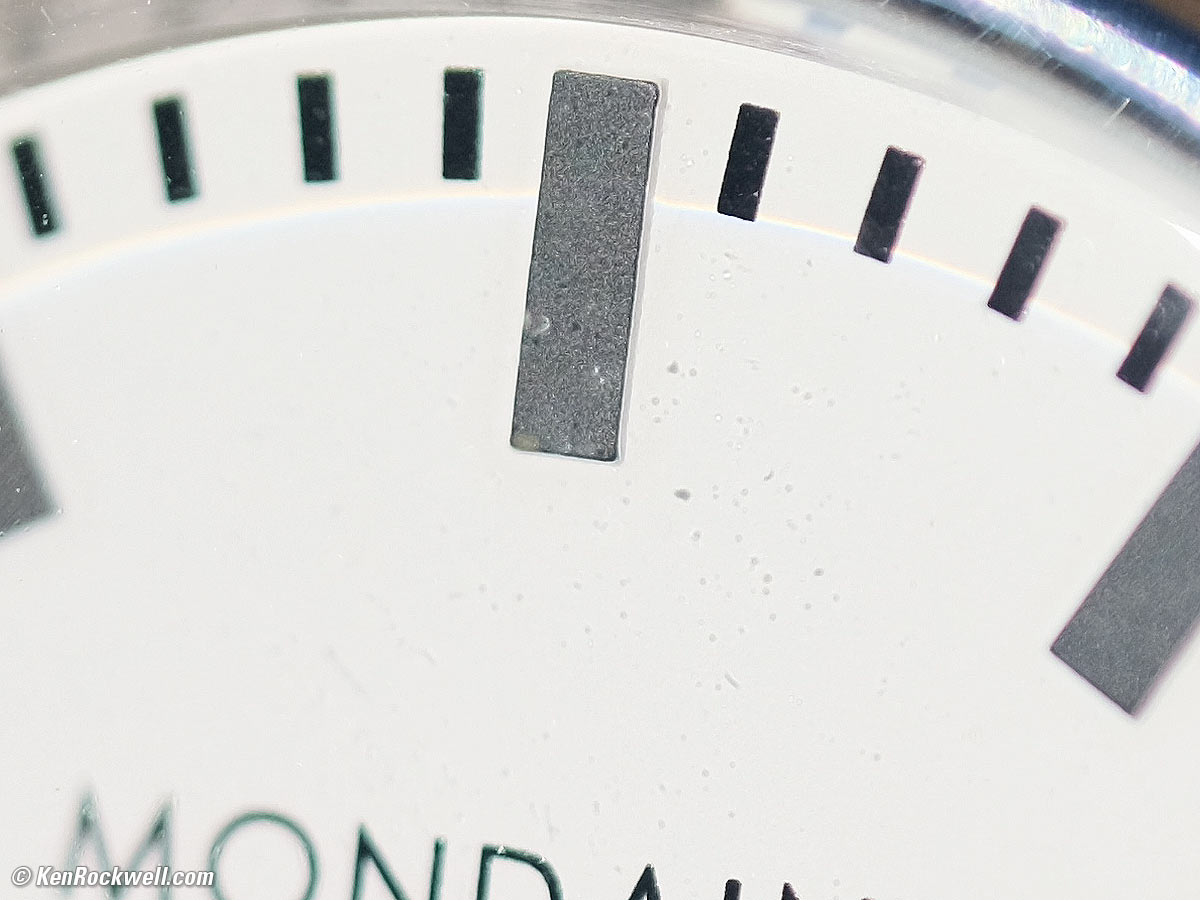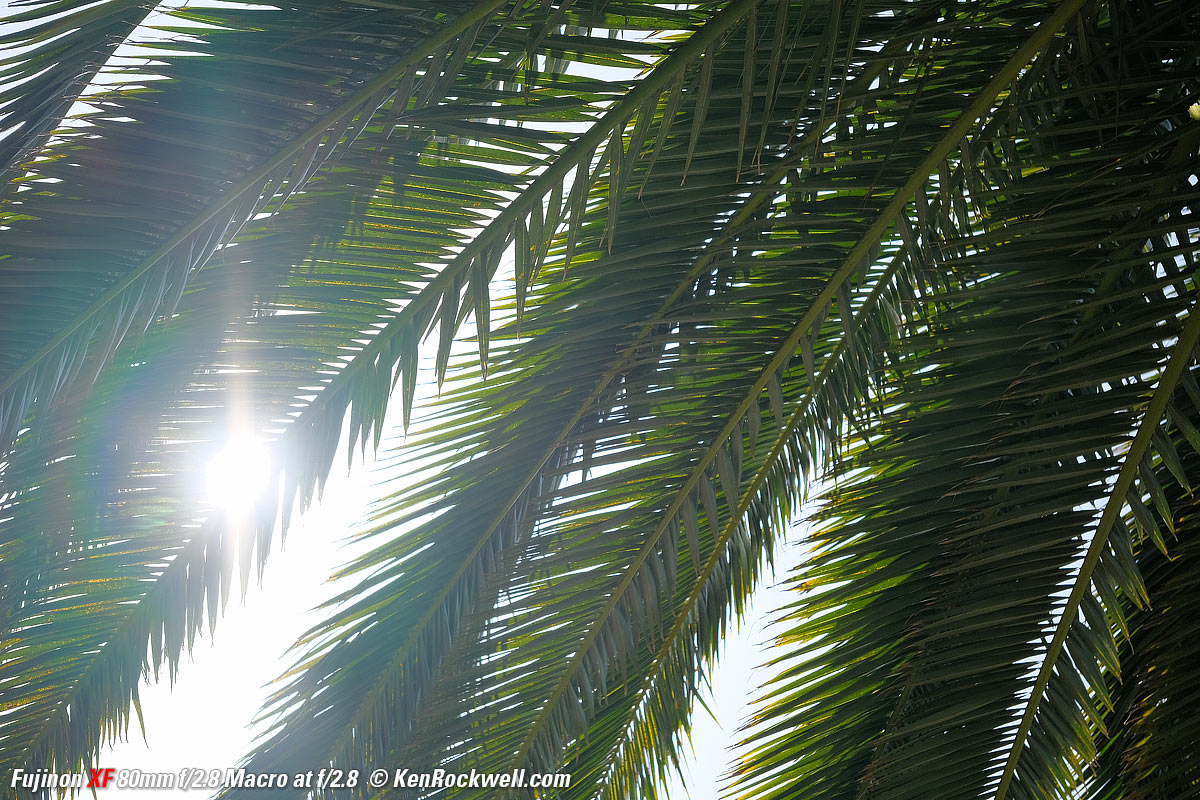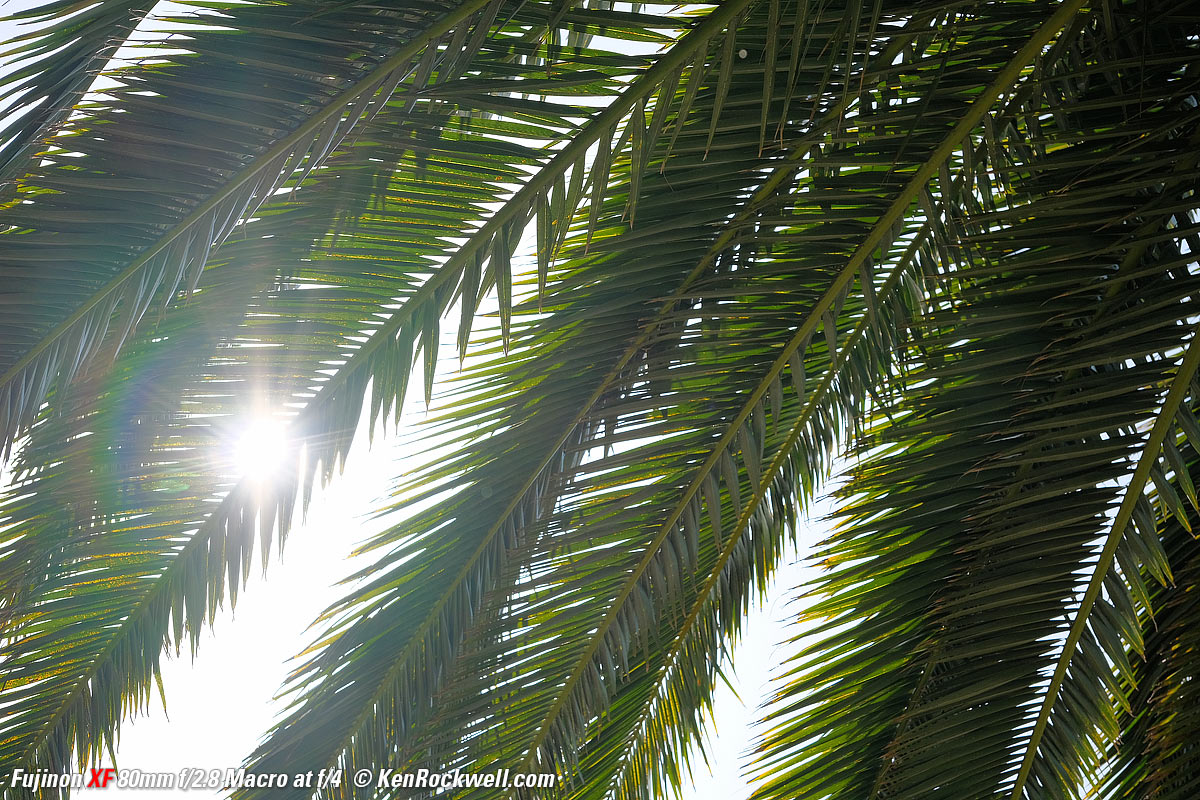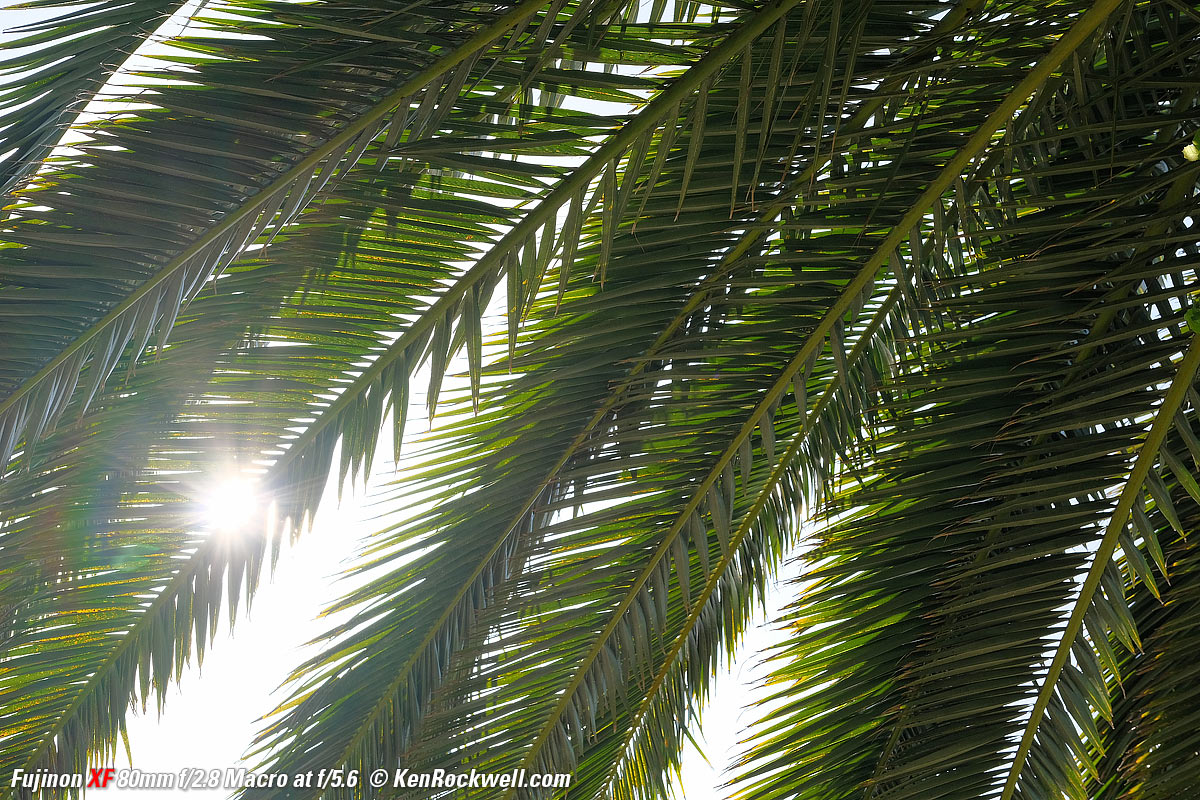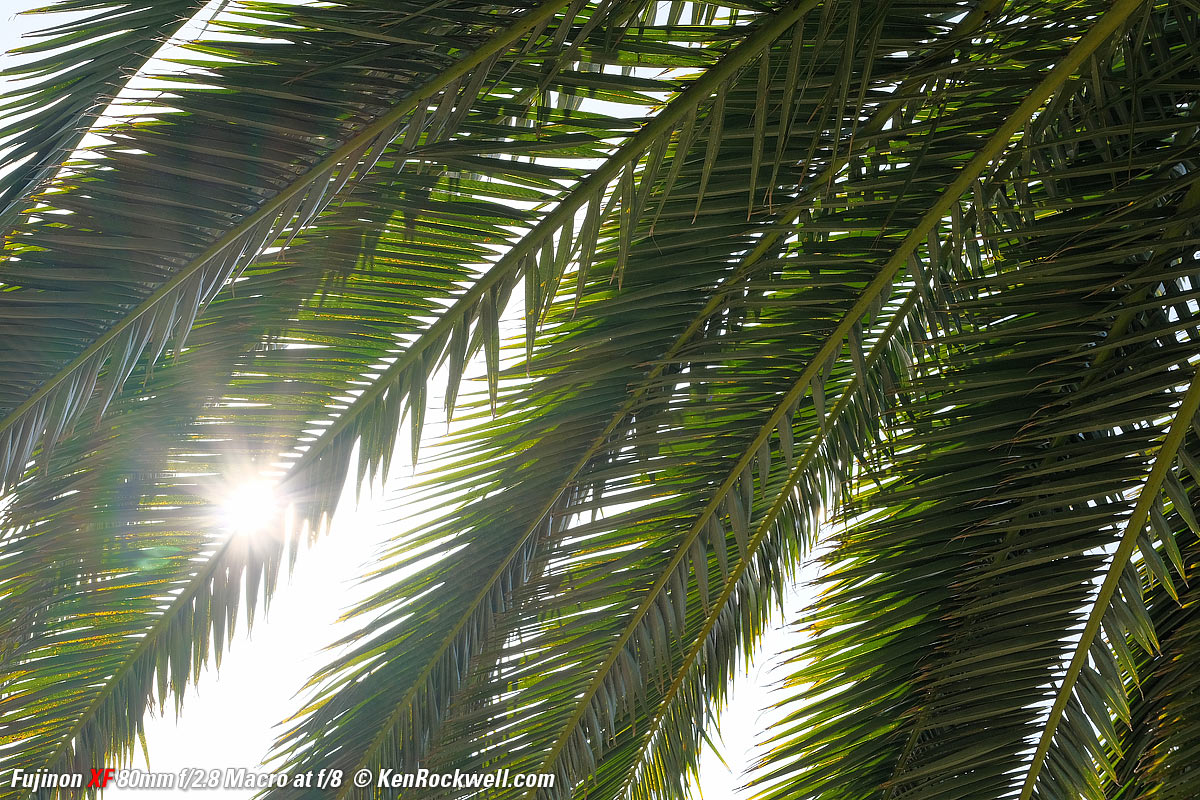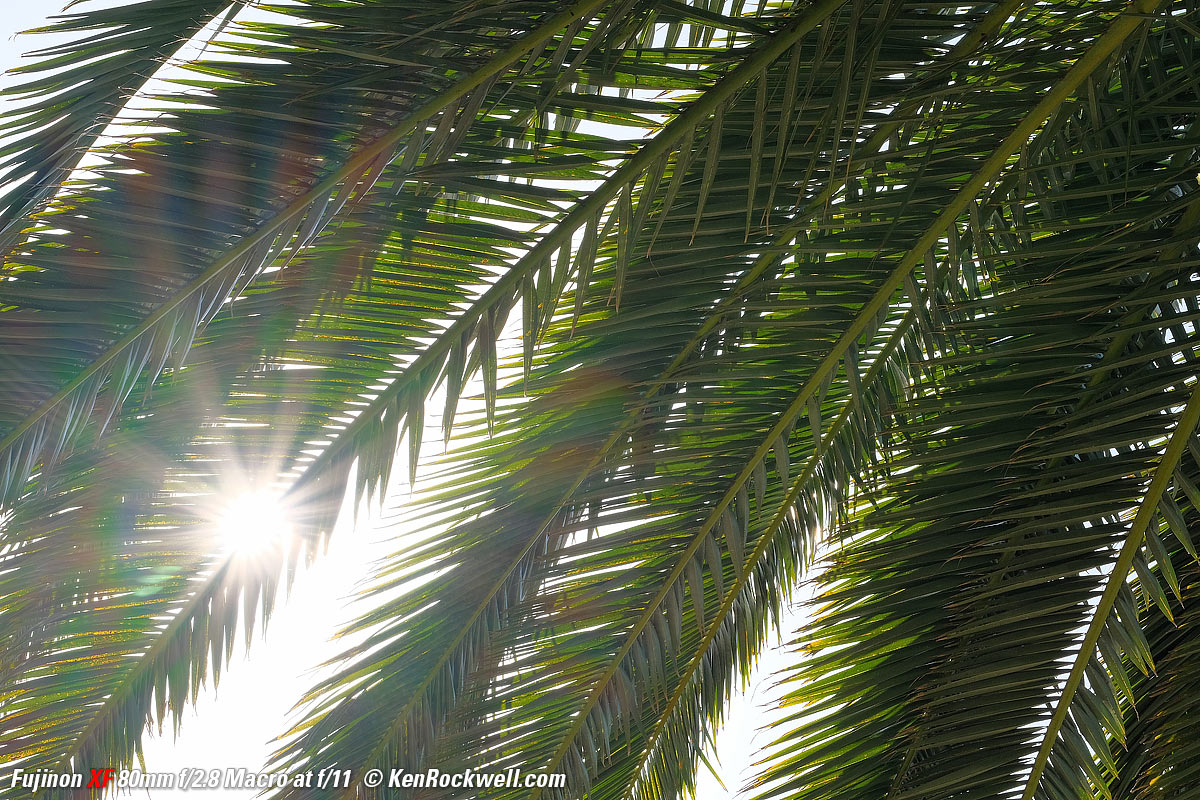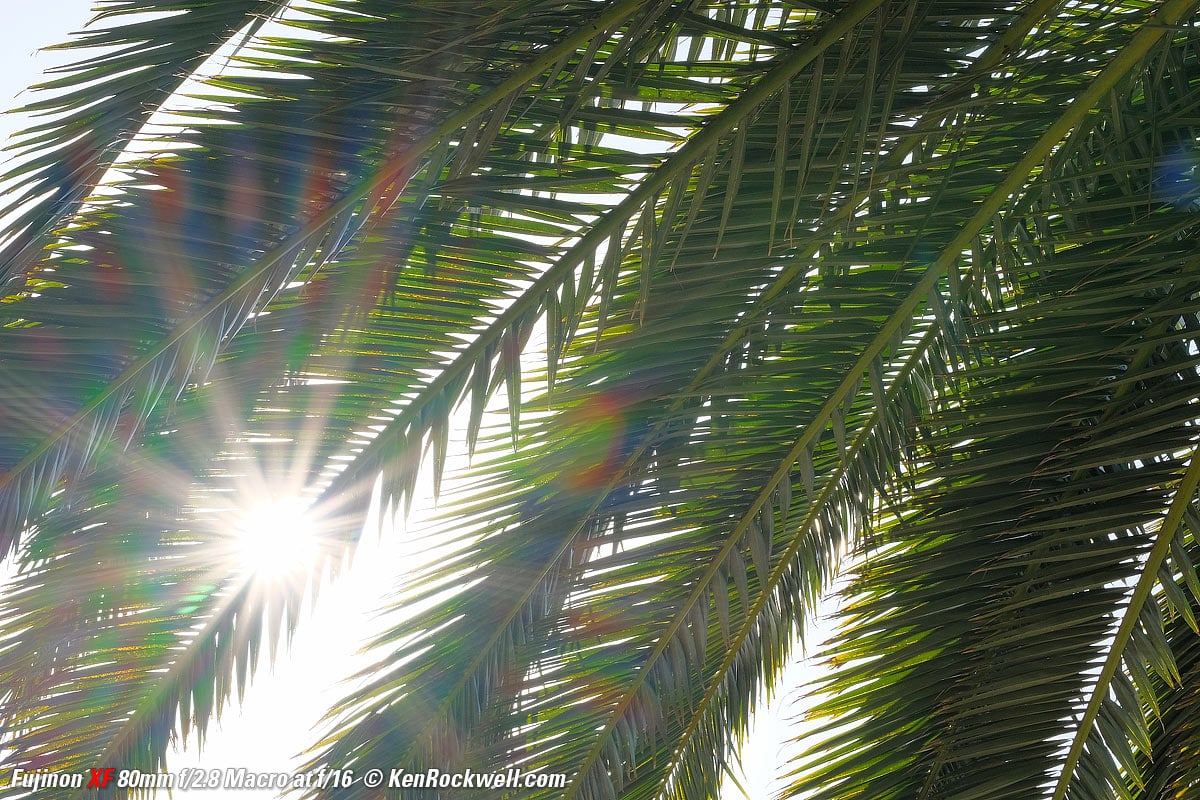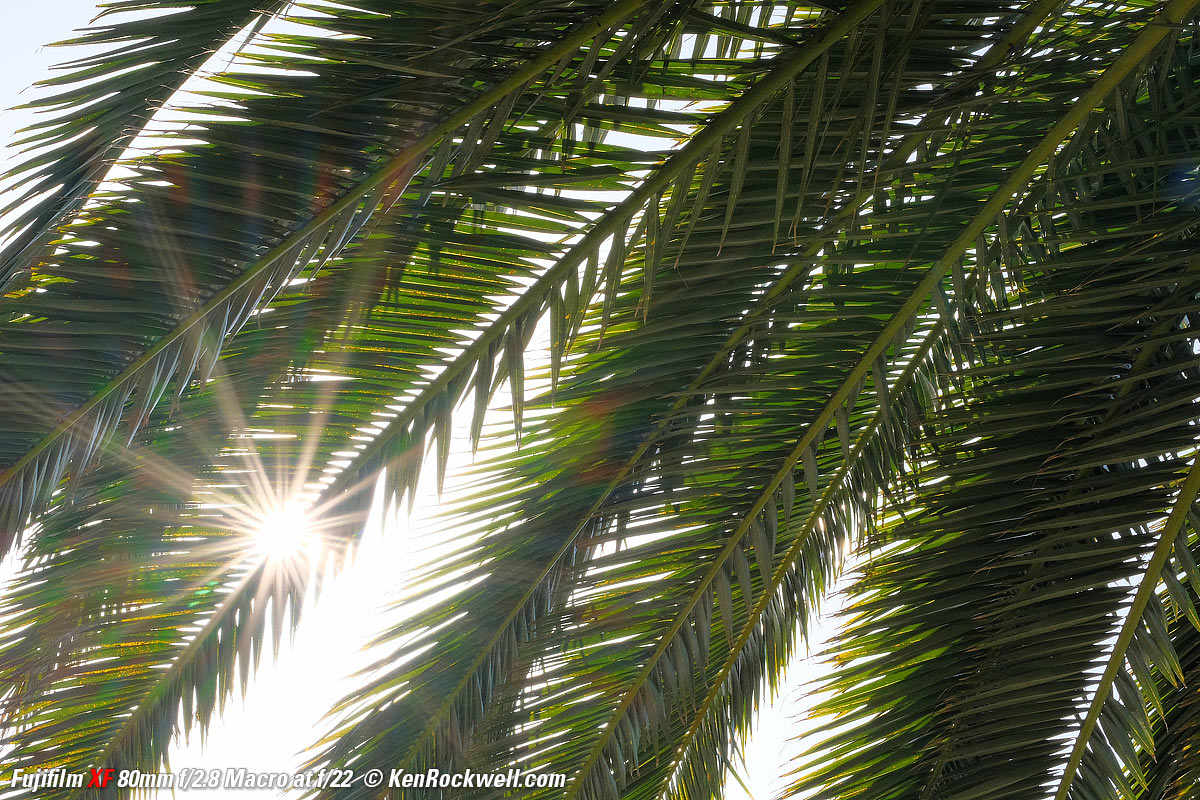Fuji 80mm f/2.8
XF Macro R LM OIS WR ASPH
Fujifilm XF 80mm f/2.8 Macro (62mm filters, 26.3 oz./746g, 1:1 macro or 0.8'/0.25m close focus, $899 (only through March 30th)). bigger. I'd get mine at Adorama, at Amazon, at B&H or at Crutchfield.
This 100% all-content, junk-free website's biggest source of support is when you use those or any of these links to my personally-approved sources when you get anything, regardless of the country in which you live. Fujifilm does not seal its boxes in any way, so never buy at retail or any other source not on my personally approved list since you'll have no way of knowing if you're missing accessories, getting a defective, damaged, returned, non-USA, gray-market, store demo or used lens. Get yours only from the trusted sources I've used personally for decades for the best prices, service, return policies and selection. Thanks for helping me help you! Ken.
March 2019 Better Pictures Fuji Fuji Lenses Sony LEICA Zeiss Nikon Canon All Reviews
Why Fixed Lenses Take Better Pictures
Sample Images
Canary Palm Trunk, 8:59 AM, 22 March 2019. Fujifilm X-T30, Fujifilm 80mm f/2.8 Macro wide-open at f/2.8 at 1/1,800 at Auto ISO 320, 200% auto dynamic range. bigger, full-resolution or camera-original © file. Shot hand-held as a NORMAL JPG; no RAW or FINE JPGs or tripods were used or needed.
Introduction
|
I buy only from these approved sources. I can't vouch for ads below. |
This Fujinon 80mm f/2.8 Macro stands out among macro lenses for its super-fast autofocusing. Few if any macro lenses can focus this fast from near to far. This Fuji 80 2.8 does this with an exotic internal focusing system where the two separate focusing groups ride on rails and ceramic ball-bearings driven by linear servo motors:
Fujifilm XF 80mm f/2.8 Macro internal focus system.
Serious macro shooting is often done with manual focus. Manual focus works well, with very fine control, perfect for getting the exact focus with a magnified image.
I'd get my 80mm macro at Adorama, at Amazon, at B&H or at Crutchfield.
Good
 Flawless optics, like most macro lenses made the past 50 years.
Flawless optics, like most macro lenses made the past 50 years.
 Manual focus is very precise, perfect for focusing magnified images as we often do in macro.
Manual focus is very precise, perfect for focusing magnified images as we often do in macro.
 Optical Image Stabilization, rated 5 stops.
Optical Image Stabilization, rated 5 stops.
 Weather resistant.
Weather resistant.
 Works with the Fujifilm XF 1.4x Teleconverter and Fujifilm XF 2x Teleconverter.
Works with the Fujifilm XF 1.4x Teleconverter and Fujifilm XF 2x Teleconverter.
Bad
 The exotic ceramic-bearing linear focus mechanism doesn't lock or cage with power off or with the lens not mounted on a camera, so it all flops around as you handle the lens. It feels like there's a something flopping around inside, and there is: the focus groups.
The exotic ceramic-bearing linear focus mechanism doesn't lock or cage with power off or with the lens not mounted on a camera, so it all flops around as you handle the lens. It feels like there's a something flopping around inside, and there is: the focus groups.
 Made with more plastic than most of Fujinon's XF lenses.
Made with more plastic than most of Fujinon's XF lenses.
 It's great that it has a big, metal aperture ring, but it's heavily-damped making it difficult to feel for clicks.
It's great that it has a big, metal aperture ring, but it's heavily-damped making it difficult to feel for clicks.
Missing
 Non-compensating diaphragm: the effective f/stop changes as focused at macro distances. This is only significant for manual non-TTL exposures. This means that the maximum aperture always reads the same (like f/2.8), even though you may lose a stop of light or more at 1:1. Other lenses compensate and always transmit as much light as the indicated aperture suggests, but that also means that those other lenses may only indicate a maximum of f/5 at 1:1. No worries, you won't notice this unless you're shooting with external light meters or shooting with manual flash or strobes.
Non-compensating diaphragm: the effective f/stop changes as focused at macro distances. This is only significant for manual non-TTL exposures. This means that the maximum aperture always reads the same (like f/2.8), even though you may lose a stop of light or more at 1:1. Other lenses compensate and always transmit as much light as the indicated aperture suggests, but that also means that those other lenses may only indicate a maximum of f/5 at 1:1. No worries, you won't notice this unless you're shooting with external light meters or shooting with manual flash or strobes.
Fujifilm XF 80mm f/2.8 Macro. bigger.
Specifications
I'd get my 80mm macro at Adorama, at Amazon, at B&H or at Crutchfield.
Name
Fuji calls this the Fujifilm Fujinon Aspherical Super EBC XF 80mm f/2.8 R LM OIS WR Macro (XF80mmF2.8 R LM OIS WR Macro).
Fujinon is Fujifilm's brand name for their lenses.
Super EBC is Fujinon's brand of multicoating, standing for Super Electron-Beam Coated.
XF is Fuji's line of good lenses for their X-mount cameras.
R means it has an aperture ring.
LM means Linear (autofocus) Motor.
OIS means Optical Image Stabilization.
WR means weather resistant:
Fujifilm XF 80mm f/2.8 Macro internal gasketing system.
∅ 62 means it takes 62mm filters.
Optics

Fujinon internal optical construction. Aspherical and ED and Super ED elements.
16 elements in 12 groups.
1 Aspherical element.
3 ED extra-low dispersion elements, which help reduce secondary axial chromatic aberration.
1 Super ED super extra-low dispersion element, which helps reduce secondary axial chromatic aberration even more.
Super Electron-Beam Coating (EBC).
Fluorine front element coating to resist dirt and smudges.
Diaphragm
Fujifilm XF 80mm f/2.8 Macro (diaphragm not seen). bigger.
9 rounded blades.
Non-compensating design; actual f/stop changes as focused more closely (only significant for manual non-TTL exposures.)
Electronically actuated.
Stops down to f/22 in 1/3-stop clicks.
Focal Length
80mm.
When used on Fuji's APS-C cameras, it sees the same angle of view as a 120 mm lens sees when used on a 35mm or full-frame camera.
See also Crop Factor.
Angle of View
20.1º diagonal.
Autofocus
Internal focus.
No external movement as focused, so no air or dust is sucked in.
Focus Scale
No.
Infinity Focus Stop
No.
Depth of Field Scale
No.
Reproduction Ratio Scale
No.
Infrared Focus Index
No.
Close Focus
0.8 feet (0.25 meters).
Maximum Reproduction Ratio
1:1 (1.0×).
Image Stabilizer
Rated 5 stops improvement.
Filters
Plastic 62 mm filter thread.
Hood
Hood for Fujifilm XF 80mm f/2.8 Macro. bigger.
Plastic bayonet hood included.
Case
Black cloth sack included.
Size
3.15" ø maximum diameter × 5.12" extension from flange.
80mm ø maximum diameter × 130mm extension from flange.
Weight
26.330 oz. (746.5g) actual measured weight, lens only.
Rated 26.5 oz. (750 g).
Quality
Made in Japan.
Environment
Rated to work down to -10º C (14º F).
Announced
07 September 2017.
Promised for
November 2017.
Included
Lens
Lens cap FLCP-62II
Lens rear cap RLCP-002
Lens hood
Lens pouch
Wrapping cloth
Packaging
Box, Fujifilm XF 80mm f/2.8 Macro. bigger.
Microcorrugated cardboard box with pulp-formed innards.
Fujifilm's Model Number
16559168 or XF80mmF2.8 R LM OIS WR Macro.
Price, USA
$899, March 2019.
Performance
Overall Autofocus Manual Focus Breathing Bokeh
Distortion Ergonomics Falloff Filters Flare & Ghosts
Lateral Color Fringes Macro Mechanics Sharpness
Spherochromatism Stabilization Sunstars
I'd get my 80mm macro at Adorama, at Amazon, at B&H or at Crutchfield.
Overall
The 80 2.8 macro offers super fast autofocus and virtually perfect optics which are especially free from spherochromatism often seen in other lenses.
Autofocus
Autofocus is very fast as I covered above. It pops surprisingly quickly between macro and far distances.
Manual Focus
Manual focus is very slow and precise.
Manual focusing is entirely electronic; the manual focus ring isn't connected to anything other than a digital encoder.
Focus Breathing
Focus breathing is the image changing size as focused in and out. It's important to cinematographers because it looks funny if the image changes size as focus gets pulled back and forth between actors. If the lens does this, the image "breathes" by growing and contracting slightly as the dialog goes back and forth.
This 80/2.8 has a lot of breathing; the image becomes much larger as focused more closely even if nothing moves.
Bokeh
Bokeh, the feel or quality of out-of-focus areas as opposed to how far out of focus they are, is pretty good. Blur circles tend to be circles with well-defined edges rather than soft blobs.
As always, if you want to throw the background as far out of focus as possible, shoot at f/2.8 and get as close as possible.
Here are photos from headshot distance:
f/2.8 (wide-open)
Davis 6250 weather station, March 2019. Fujifilm X-T30, Fujifilm 80mm f/2.8 Macro wide-open at f/2.8 at 1/5,000 at Auto ISO 320, 200% auto dynamic range. bigger or camera-original © file.
f/4
Davis 6250 weather station, March 2019. Fujifilm X-T30, Fujifilm 80mm f/2.8 Macro at f/4 at 1/1,500 at Auto ISO 160, 100% auto dynamic range. bigger or camera-original © file.
f/5.6
Davis 6250 weather station, March 2019. Fujifilm X-T30, Fujifilm 80mm f/2.8 Macro at f/5.6 at 1/1,500 at Auto ISO 320, 200% auto dynamic range. bigger or camera-original © file.
f/8
Davis 6250 weather station, March 2019. Fujifilm X-T30, Fujifilm 80mm f/2.8 Macro at f/8 at 1/750 at Auto ISO 320, 200% auto dynamic range. bigger or camera-original © file.
Distortion
The Fujinon 80mm f/2.8 Macro has no visible distortion, as a macro lens should be.
These aren't facts or specifications, they are the results of my research that requires hours of photography and calculations on the resulting data.
| Photoshop's lens correction filter factors | X-T30 Lens Modulation Optimizer ON |
X-T30 Lens Modulation Optimizer OFF |
30' (10m) |
±0.00 | ±0.00 |
10' (3m) |
±0.00 | ±0.00 |
3' (1m) |
±0.00 | ±0.00 |
© 2019 KenRockwell.com. All rights reserved.
Ergonomics
Fujifilm XF 80mm f/2.8 Macro. bigger. |
Fujifilm XF 80mm f/2.8 Macro. bigger. |
Half the lens is the focus ring.
The nice metal aperture ring sadly is heavily damped, making it slow and difficult to select apertures by feeling for clicks. There certainly is no way to find full versus third-stops by feel.
The OIS and focus-limiter switches are too close to the mount, so you have to stop and reach back to get to them.
Falloff
Falloff is completely invisible. Fuji's cameras tend to correct for any that's there.
I've greatly exaggerated the falloff by shooting a gray field and placing these on a gray background; it will not look this bad in actual photos of real things.
Fujinon 80mm f/2.8 Macro falloff.
© 2019 KenRockwell.com. All rights reserved. |
Filters, use with
There's no need for thin filters. You can stack several 62mm filters with no vignetting.
Go ahead and use your standard rotating polarizer and grad filters.
Flare & Ghosts
There aren't any ghosts, which is great. See samples at Sunstars.
Lateral Color Fringes
There are no color fringes as shot Fujifilm's cameras, which by default correct for any that may be there.
Macro Performance
Of course it gets super-close and it's also super sharp. We expect that, and this lens delivers.
This is a 1:1 macro lens. 1:1 macro means that the image at the sensor is the same size as the subject, which means that something 0.6 x 1" (16 x 24mm) can fill the frame.
f/2.8
As expected, it's super sharp even wide-open at f/2.8. Of course there is no depth of field this close with any lens, so even the slightest defocus or lack of perfect alignment or variations in the heights of things on the watch face will put them out of focus. In this sample, only the face of the right dial is in focus; all the rest of the face and all the hands and the LCD displays are out of focus (that's physics for you):
Casio G-Shock Solar Atomic Watch at close-focus distance, 22 March 2019. Fujifilm X-T30, Fujifilm 80mm f/2.8 Macro wide-open at f/2.8 at 1/2,900 at Auto ISO 320, 200% auto dynamic range. bigger or camera-original © file.
1,200 × 900 pixel crop from above. bigger or camera-original © file.
The texture you're seeing is on the watch face.
If this 1,200 × 900 pixel crop is about 3" (7.5cm) wide on your phone, then the complete image printed at this same extreme magnification would be about 11 × 16" (0.9 × 1.3 feet or 25 × 40 cm).
If this 1,200 × 900 pixel crop is about 6" (15cm) wide on your screen, then the complete image printed at this same extreme magnification would be about 21 × 31" (1.7 × 2.6 feet or 50 × 80 cm).
If this 1,200 × 900 pixel crop is about 12" (30cm) wide on your screen, then the complete image printed at this same extreme magnification would be about 42 × 62" (3.5 × 5.2 feet or 1.05 × 1.6 meters).
f/8
As expected, the only difference at f/8 is that the out-of-focus parts, which are most of this image, aren't quite as far out of focus. This is simply the laws of physics and this lens is performing flawlessly:
Casio G-Shock Solar Atomic Watch at close-focus distance, 22 March 2019. Fujifilm X-T30, Fujifilm 80mm f/2.8 Macro at f/8 at 1/420 at Auto ISO 320, 200% auto dynamic range. bigger or camera-original © file.
1,200 × 900 pixel crop from above. bigger or camera-original © file.
The texture you're seeing is on the watch face.
If this 1,200 × 900 pixel crop is about 3" (7.5cm) wide on your phone, then the complete image printed at this same extreme magnification would be about 11 × 16" (0.9 × 1.3 feet or 25 × 40 cm).
If this 1,200 × 900 pixel crop is about 6" (15cm) wide on your screen, then the complete image printed at this same extreme magnification would be about 21 × 31" (1.7 × 2.6 feet or 50 × 80 cm).
If this 1,200 × 900 pixel crop is about 12" (30cm) wide on your screen, then the complete image printed at this same extreme magnification would be about 42 × 62" (3.5 × 5.2 feet or 1.05 × 1.6 meters).
f/22
As expected, there is more in focus at f/22. This is simply the physics of optics; you can't ever get all of a 3D subject in focus at 1:1 unless you resort to focus stacking:
Casio G-Shock Solar Atomic Watch at close-focus distance, 22 March 2019. Fujifilm X-T30, Fujifilm 80mm f/2.8 Macro at f/22 at 1/120 at Auto ISO 500, 200% auto dynamic range. bigger or camera-original © file.
1,200 × 900 pixel crop from above. bigger or camera-original © file.
The texture you're seeing is on the watch face.
If this 1,200 × 900 pixel crop is about 3" (7.5cm) wide on your phone, then the complete image printed at this same extreme magnification would be about 11 × 16" (0.9 × 1.3 feet or 25 × 40 cm).
If this 1,200 × 900 pixel crop is about 6" (15cm) wide on your screen, then the complete image printed at this same extreme magnification would be about 21 × 31" (1.7 × 2.6 feet or 50 × 80 cm).
If this 1,200 × 900 pixel crop is about 12" (30cm) wide on your screen, then the complete image printed at this same extreme magnification would be about 42 × 62" (3.5 × 5.2 feet or 1.05 × 1.6 meters).
Mechanical Quality
Fujifilm XF 80mm f/2.8 Macro. bigger.
This is mostly plastic on the outside with a metal mount and aperture ring. Internals are metal and plastic.
Hood
Plastic bayonet.
Front Bumper
None.
Filter Threads
Plastic.
Hood Bayonet Mount
Plastic.
Front Barrel Exterior
Plastic.
Focus Ring
Rubber-covered plastic.
Mid-Barrel Exterior
Small section with focus index: plastic.
Aperture Ring
Anodized aluminum with engraved and filled markings.
Slide Switches
Plastic.
Rear Barrel Exterior
Plastic.
Identity
Printed around front of lens just behind hood mount.
Internals
Seem like plastic and metal.
Dust Gasket at Mount
Yes.
Mount
Chromed metal.
Markings
Paint.
Aperture ring is engraved.
Serial Number
Laser engraved in black-on-black on barrel near mount.
Noises When Shaken
Enough clunking of the focus groups sliding around on their ceramic bearings to make you think something is broken.
These elements only stop flopping around when on an operating camera. As soon as the camera goes to sleep it starts flopping around again.
Made in
Japan.
Sharpness
Lens sharpness has nothing to do with picture sharpness; every lens made in the past 100 years is more than sharp enough to make super-sharp pictures if you know what you're doing. The only limitation to picture sharpness is your skill as a photographer. It's the least talented who spend the most time worrying about lens sharpness. Skilled photographers make great images with whatever camera is in their hands; I've made some of my best images of all time with an irreparably broken camera! Most pixels are thrown away before you see them, but camera makers don't want you to know that.
If you're not getting ultra-sharp pictures with this, be sure not to shoot at f/11 or smaller where all lenses are softer due to diffraction, always shoot at ISO 160 or less because cameras become softer at ISO 200 and above, avoid shooting across long distances over land which can lead to atmospheric heat shimmer, be sure everything is in perfect focus, set your camera's sharpening as you want it (I set mine to the maximum) and be sure nothing is moving, either camera or subject. If you want to ensure a soft image with any lens, shoot at f/16 at ISO 1,600 at default sharpening in daylight through heat shimmer of rapidly moving subjects at differing distances in the same image.
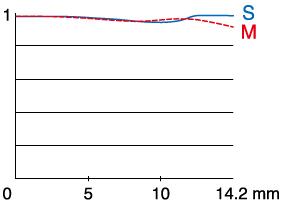 |
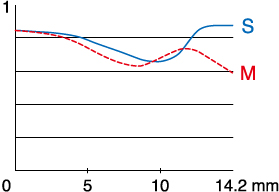 |
MTF at 15 cycles/mm. |
MTF at 45 cycles/mm. |
Spherochromatism
Spherochromatism, also called "color bokeh" by laymen, is an advanced form of chromatic aberration in a different dimension than lateral color. It can cause colored fringes on out-of-focus highlights, usually seen as green fringes on backgrounds and magenta fringes on foregrounds. Spherochromatism is common in fast lenses of moderate focal length when shooting contrasty items at full aperture. It goes away as stopped down.
Miraculously this lens has nearly none, which makes it a stand-out performer for this kind of lens.
Mondaine A132.30348.11SBB at f/2.8, 22 March 2019. Shot on Fujifilm X-T30. bigger or camera-original © file.
1,200 × 900 pixel crop from above. bigger or camera-original © file.
If this 1,200 × 900 pixel crop is about 3" (7.5cm) wide on your phone, then the complete image printed at this same high magnification would be about 11 × 16" (0.9 × 1.3 feet or 25 × 40 cm).
If this 1,200 × 900 pixel crop is about 6" (15cm) wide on your screen, then the complete image printed at this same very high magnification would be about 21 × 31" (1.7 × 2.6 feet or 50 × 80 cm).
If this 1,200 × 900 pixel crop is about 12" (30cm) wide on your screen, then the complete image printed at this same extreme magnification would be about 42 × 62" (3.5 × 5.2 feet or 1.05 × 1.6 meters).
Image Stabilization
I get perfect tripod-equivalent sharpness for almost every shot at 1/15 of a second hand-held.
I get two and a half stops of real-world improvement with Optical Image Stabilization (OIS).
"Percent Perfectly Sharp Shots" are the percentage of frames with 100% perfect tripod-equivalent sharpness. Hand tremor is a random occurrence, so at marginal speeds some frames will be perfectly sharp with others in various stages of blur — all at the same shutter speed. This rates how many shots are perfectly sharp, not how sharp all the frames are.
| % Perfectly Sharp Shots | 1/4 |
1/8 |
1/15 |
1/30 |
1/60 |
1/125 |
1/250 |
| OIS ON | 0 | 10 | 100 | 100 | 100 | 100 | 100 |
| OIS OFF | 0 | 0 | 33 | 10 | 67 | 100 | 100 |
Sunstars
With a 9-blade rounded diaphragm, I get 18-pointed sunstars on brilliant points of light mostly at the smallest apertures.
Click any to enlarge:
click any to enlarge.
Ignore the crazy rainbow effects; these are sensor artifacts caused by taking a picture directly of the sun and exposing for the dark underside of the palm tree. Likewise the vertical smear at f/2.8 is another sensor artifact called interline transfer smear; it's not a lens defect.
Compared
I'd get my 80mm macro at Adorama, at Amazon, at B&H or at Crutchfield.
Versus the 90mm f/2
This 80mm is a great macro lens, but unless you really are shooting macro the Fujifilm XF 90mm f/2 is better made with much more metal, smaller, lighter, a full stop faster and costs less.
This 80mm has stabilization, the 90mm does not.
So long as you don't need to get closer than 2 feet (0.6 meters) or need stabilization, the 90mm f/2 is a better lens.
This 80mm macro is for people getting very close. This 80mm works great for general photography, and the 90mm f/2 works even better.
Versus the 60mm f/2.4
The Fujifilm XF 60mm f/2.4 is much less lens. It only gets to half life size, not life size (1:1) as this lens does, and the 60mm focal length doesn't give you as much working room between the lens and your subject. Working room is important to let you get light on your subject and not to disturb living subjects.
Versus LEICA
I compared it to the reference LEICA ELMARIT-M 90mm f/2.8 on an adapter, and this Fujinon 80mm f/2.8 is far superior, mostly due to an almost complete lack of spherochromatism which is quite visible in the LEICA lens wide-open as shot on a 26MP APS-C Fujifilm X-T30.
Not only does it have inferior optics, the LEICA lens only focuses to 3.5 feet (1 meter), is manual-focus only and lacks stabilization.
Recommendations
For Macro
If you need an autofocus macro for your Fujifilm camera, this is the best there is — if you're actually shooting macro.
For General Photography
This 80mm works great for general photography, and the 90mm f/2 works even better if you don't need stabilization
The 90mm is smaller, lighter, better made of all metal, it's a stop faster, has better bokeh and costs less — but lacks stabilization
Get this 80mm if you need macro or stabilization, but get the 90mm if you don't.
Hoods, Caps & Protection
I never use hoods. I leave it in the box for resale time.
I use a clear (UV) protective filter instead of a cap. I only use a cap when I throw this in a bag with other gear, otherwise I leave a clear protective filter on my lens at all times instead of a cap so I'm ready to shoot instantly.
The very best protective filter is the Hoya multicoated HD3 62mm UV which uses hardened glass and repels dirt and fingerprints.
For less money, the B+W 62mm 010 is an excellent filter, as are the multicoated version and the basic multicoated Hoya filters, but the Hoya HD3 is the toughest and the best.
Filters last a lifetime, so you may as well get the best. The Hoya HD3 stays cleaner than the others since it repels oil and dirt.
Getting yours
I'd get my 80mm macro at Adorama, at Amazon, at B&H or at Crutchfield.
This 100% all-content website's biggest source of support is when you use those or any of these links to approved sources when you get anything, regardless of the country in which you live. Fujifilm does not seal its boxes in any way, so never buy at retail or any other source not on my personally approved list since you'll have no way of knowing if you're missing accessories, getting a defective, damaged, returned, non-USA, store demo or used lens. I use the stores I do because they ship from secure remote warehouses where no one gets to touch your new camera before you do. Buy only from the approved sources I use myself for the best prices, service, return policies and selection.
Thanks for helping me help you!
Ken, Mrs. Rockwell, Ryan and Katie.
More Information
Fujifilm's 80mm f/2.8 Macro product pages.
Fujifilm's 80mm f/2.8 Macro press release.
© Ken Rockwell. All rights reserved. Tous droits réservés. Alle Rechte vorbehalten.
Help Me Help You
I support my growing family through this website, as crazy as it might seem.
The biggest help is when you use any of these links when you get anything. It costs you nothing, and is this site's, and thus my family's, biggest source of support. These places always have the best prices and service, which is why I've used them since before this website existed. I recommend them all personally.
If you find this page as helpful as a book you might have had to buy or a workshop you may have had to take, feel free to help me continue helping everyone.
If you've gotten your gear through one of my links or helped otherwise, you're family. It's great people like you who allow me to keep adding to this site full-time. Thanks!
If you haven't helped yet, please do, and consider helping me with a gift of $5.00.
As this page is copyrighted and formally registered, it is unlawful to make copies, especially in the form of printouts for personal use. If you wish to make a printout for personal use, you are granted one-time permission only if you PayPal me $5.00 per printout or part thereof. Thank you!
Thanks for reading!
Mr. & Mrs. Ken Rockwell, Ryan and Katie.
